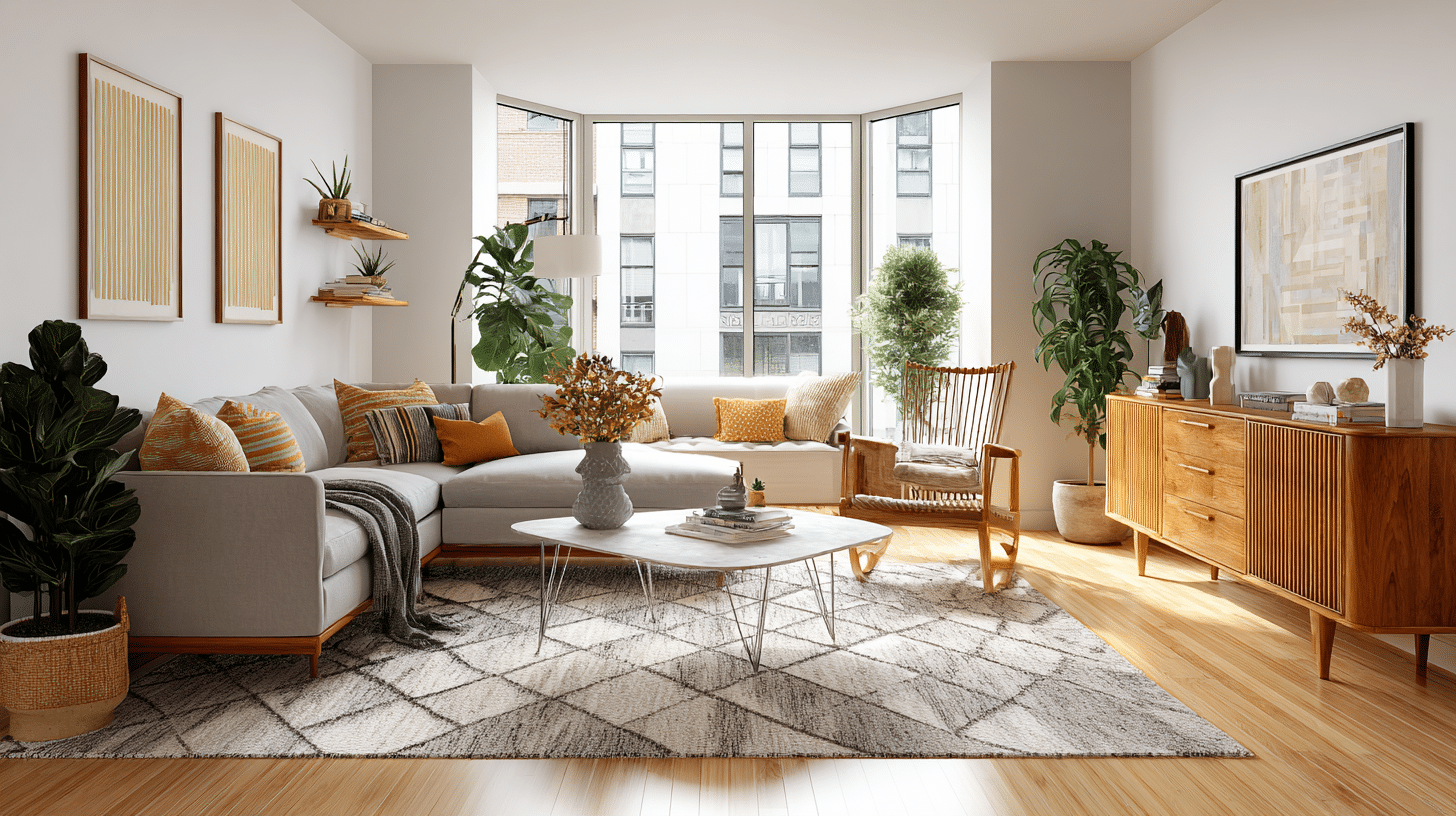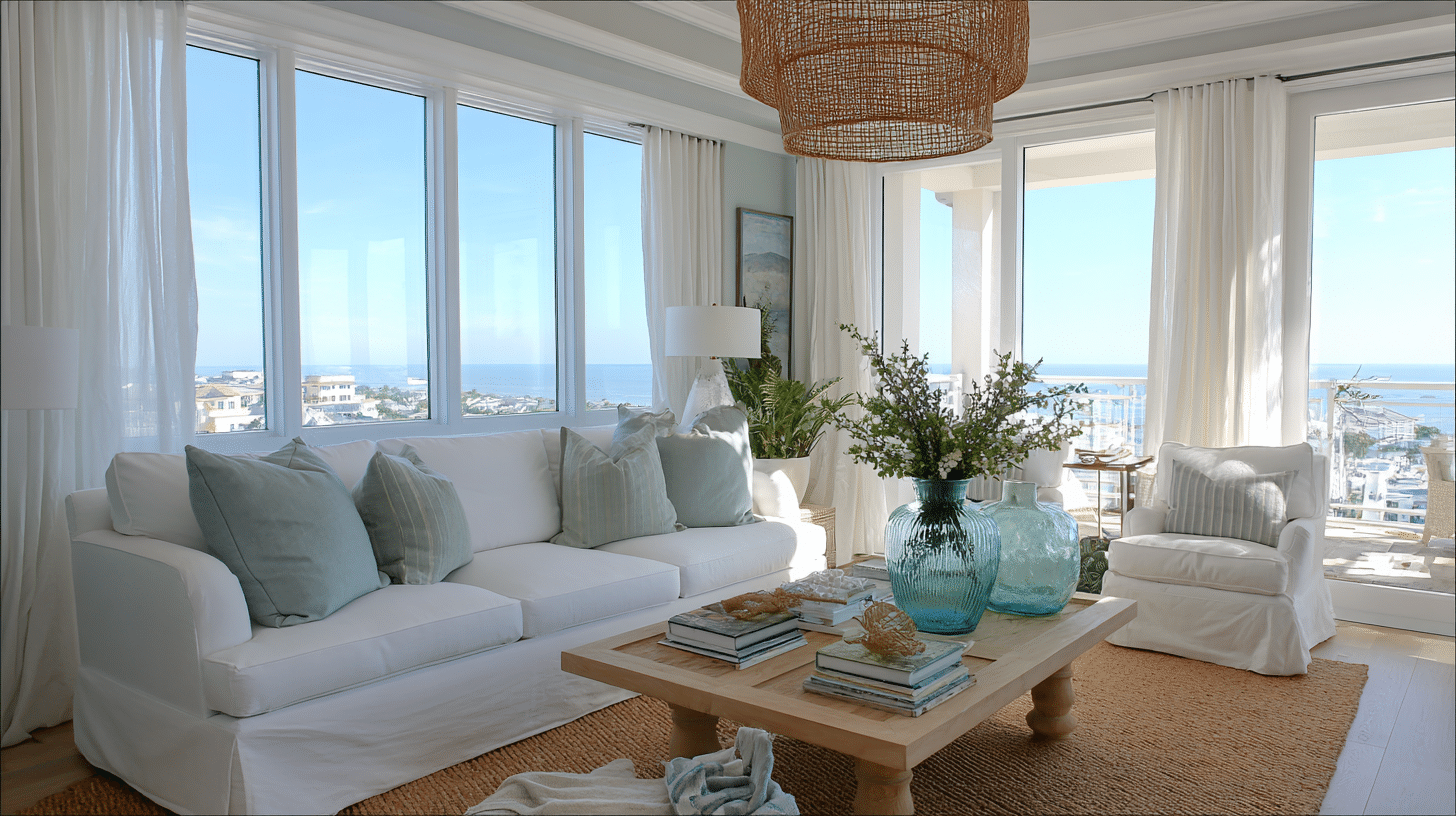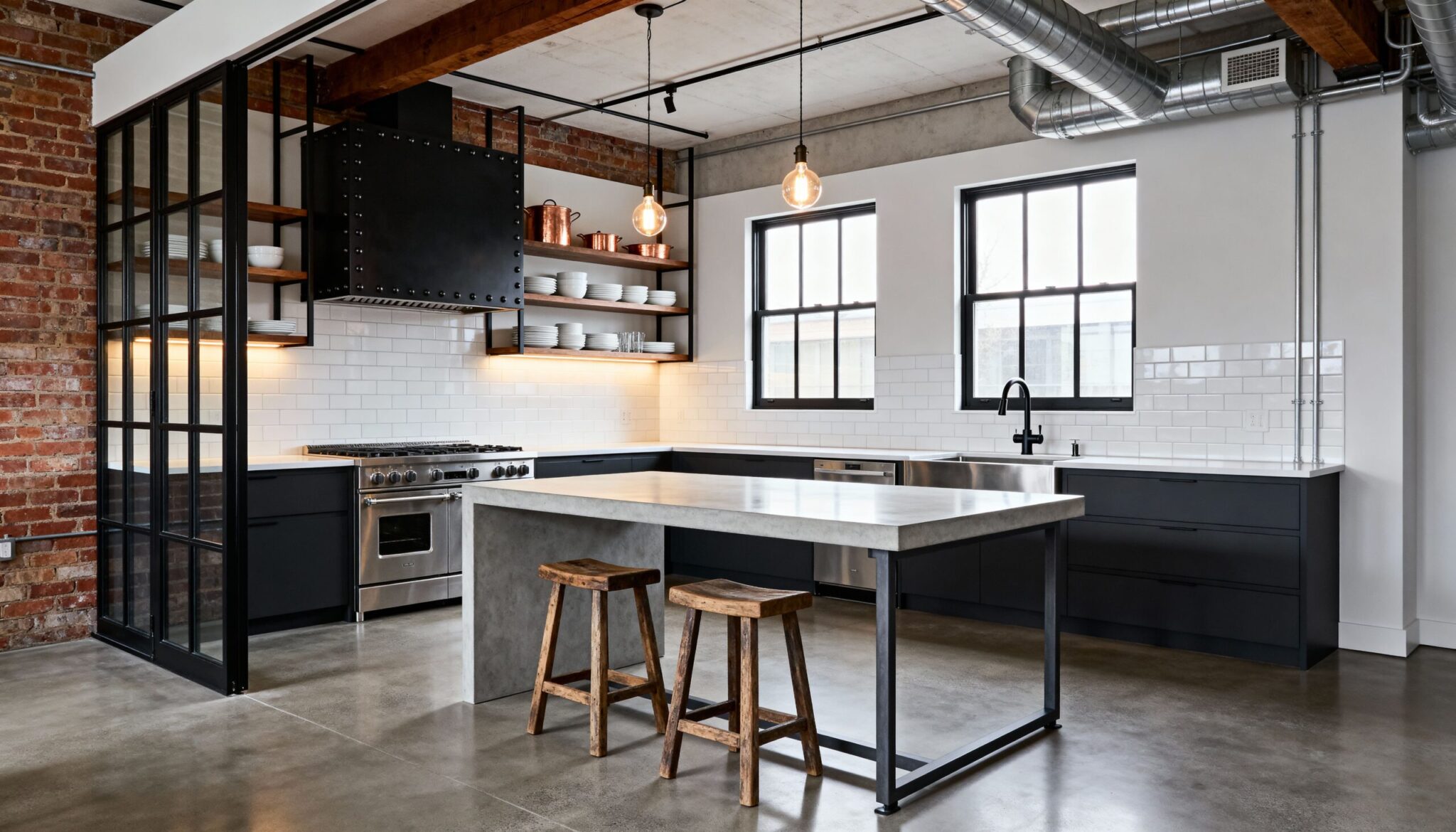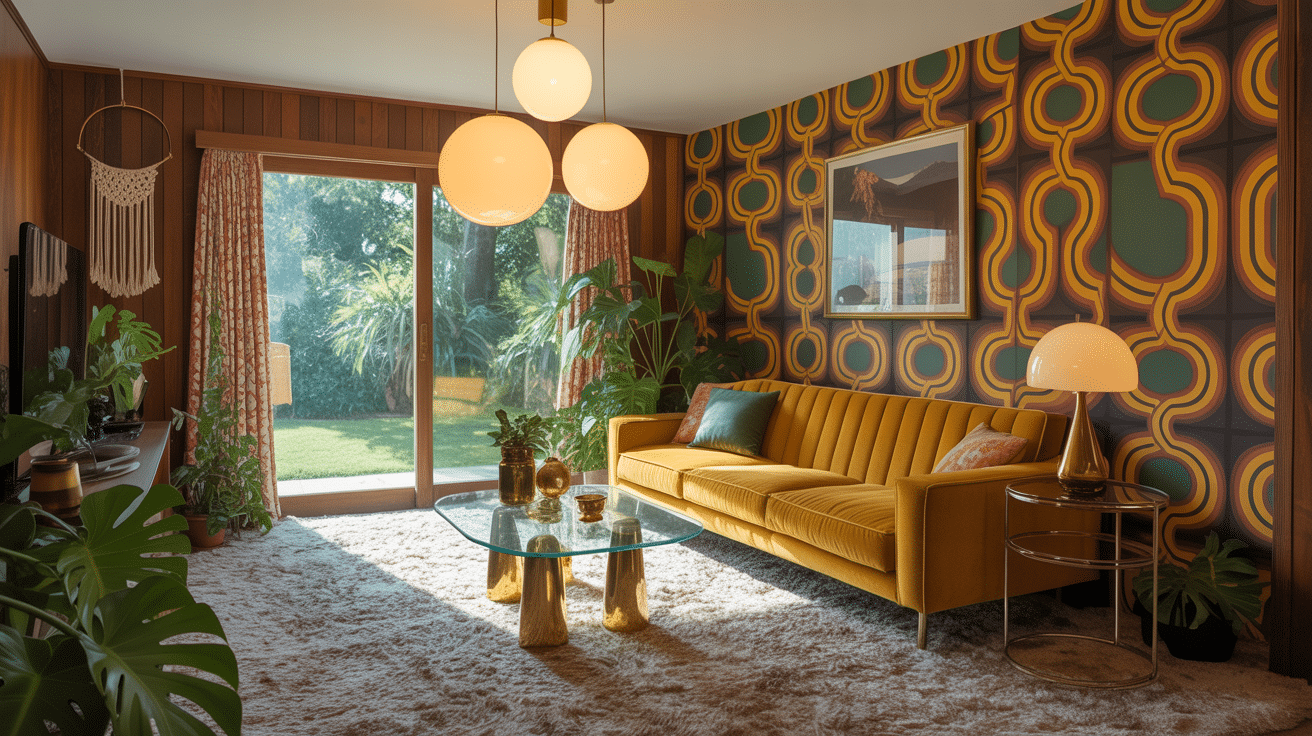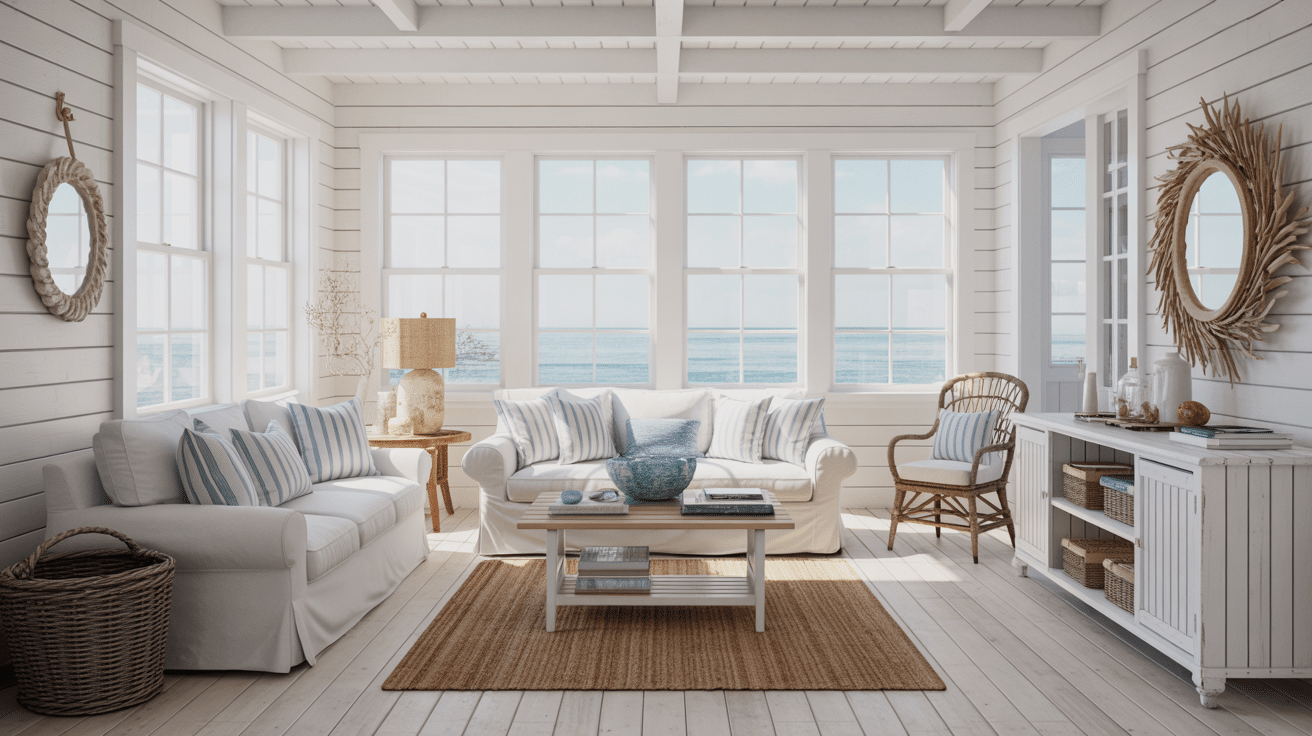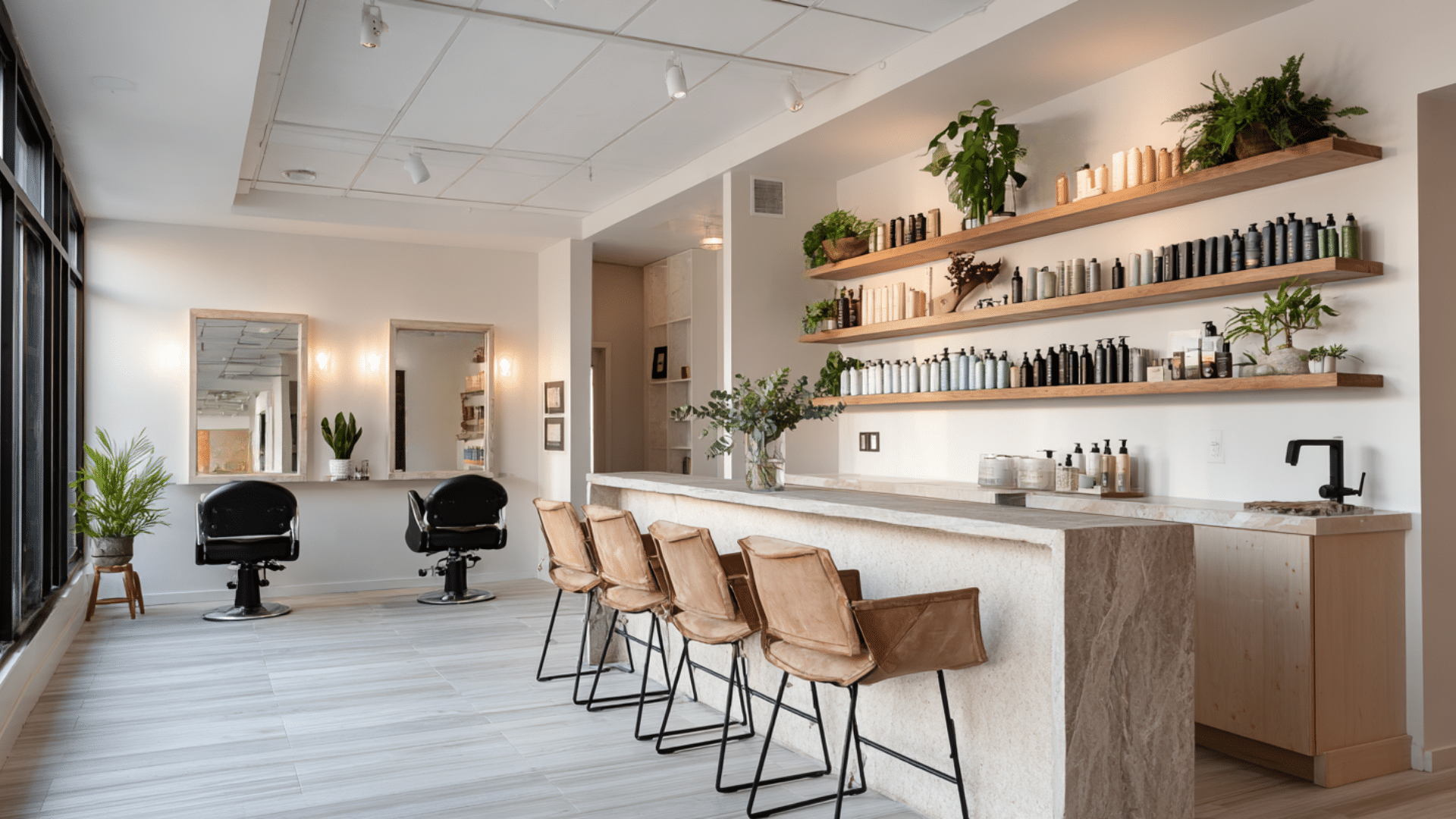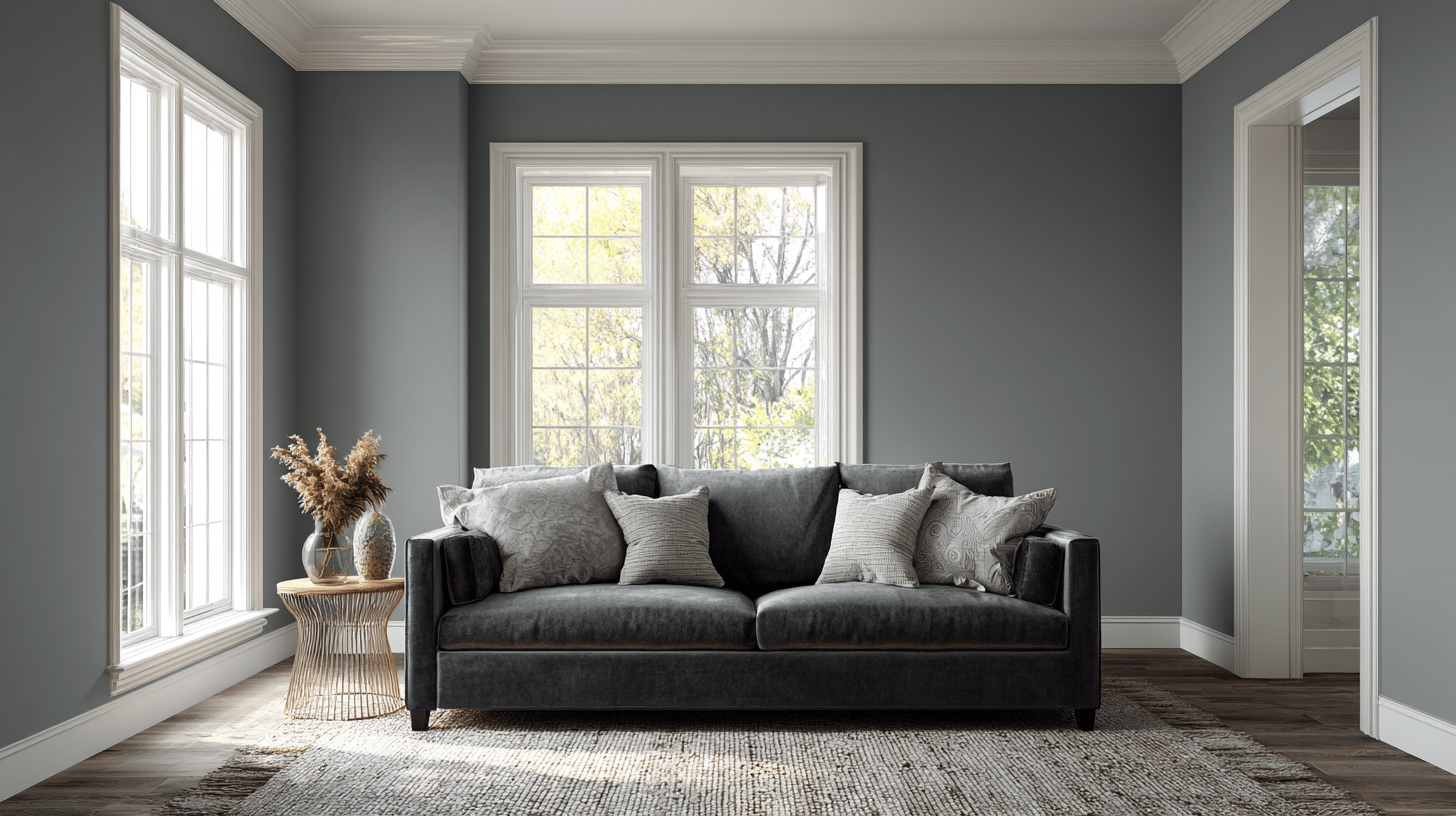Mid-century modern interior design emerged in the 1940s and reached its peak in the 1960s. This style celebrates simplicity and function over fancy details.
You’ll recognize it by its clean, straight lines and open floor plans, which make rooms feel bigger.
Natural materials, such as wood and stone, take center stage, while bold colors add personality without overwhelming the space.
The furniture sits low to the ground and serves multiple purposes. Everything has a reason for being there, and nothing feels cluttered or excessive.
Core Elements of Mid-Century Modern Homes
These key elements work together to create that perfect balance of style and comfort. Let me walk you through the essential components.
Clean Lines and Geometric Shapes: Forget ornate details and fancy moldings. Mid-century modern focuses on straight lines, sharp angles, and simple geometric forms that create visual impact through simplicity.
Open Floor Plans: Walls come down to connect living spaces. Kitchens flow smoothly into dining rooms, which in turn open to living areas. This creates better traffic flow and makes smaller homes feel spacious.
Floor-to-Ceiling Windows: Large windows bring the outdoors inside while flooding rooms with natural light. These expansive glass panels often stretch from floor to ceiling, blurring the line between interior and exterior.
Natural Materials: Wood, stone, brick, and leather dominate the material palette. These organic textures add coziness and contrast beautifully against sleek metal accents, such as chrome and steel fixtures.
Low-Profile Furniture: Sofas, coffee tables, and beds are designed to sit closer to the ground. This horizontal force makes ceilings appear higher while maintaining the clean, uncluttered look throughout the space.
Bold Color Accents: Neutral backgrounds are punctuated with vibrant colors through artwork, pillows, or statement furniture. Think orange, turquoise, yellow, and red against white, beige, or gray backdrops.
Integration with Nature: Indoor plants, natural light, and outdoor views are incorporated into the design. Large patios, courtyards, and gardens extend the living space beyond the house’s walls.
Mid-Century Modern House Interior Ideas
Bring mid-century modern style into your home. Each suggestion is suitable for different budgets and room sizes, allowing you to choose the one that best fits your space.
1. Starburst Wall Clocks
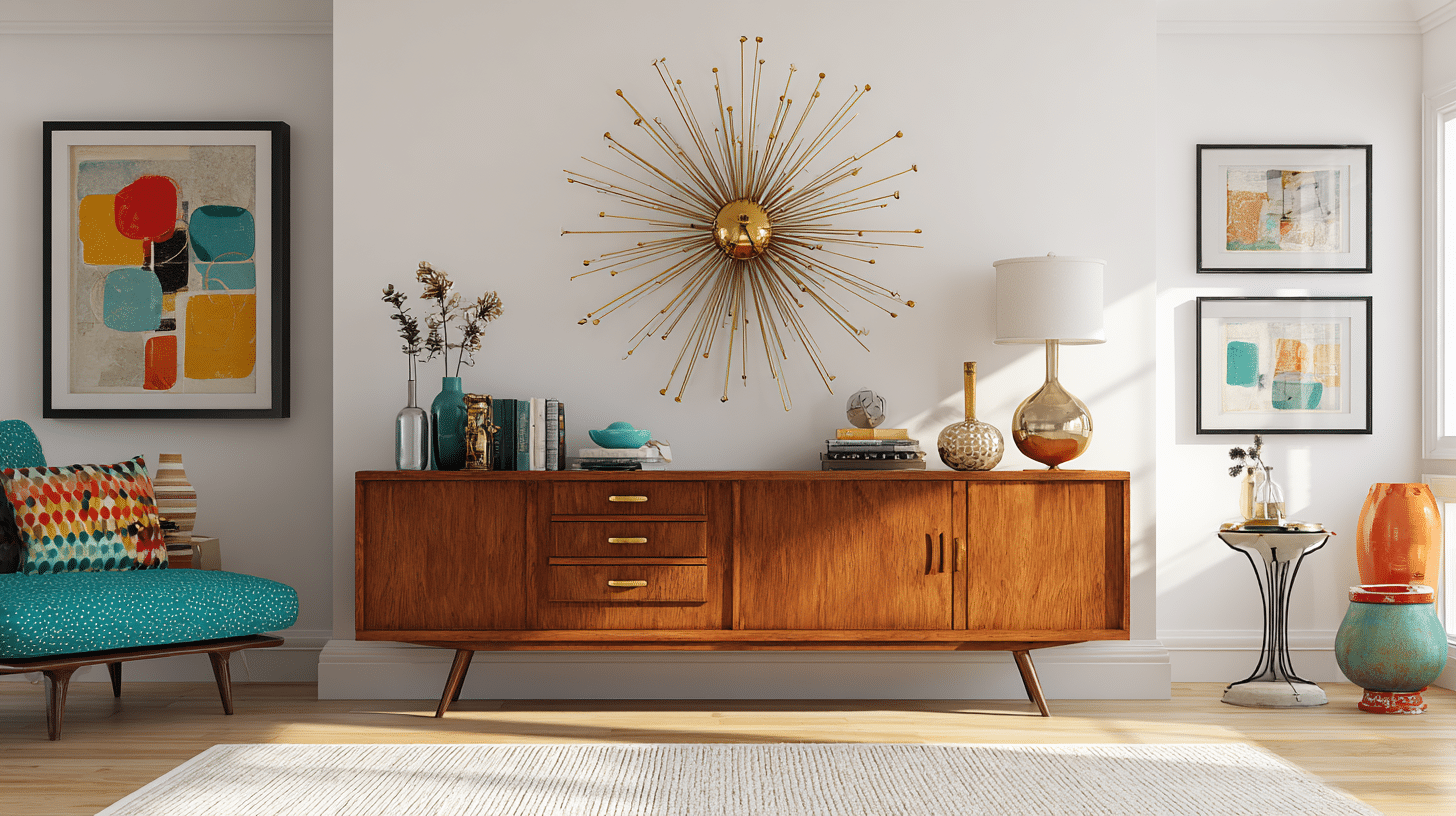
These iconic timepieces, with their radiating spokes, instantly add mid-century flair to any wall.
Choose brass, wood, or colorful versions to match your room’s palette. They work as functional art pieces that draw the eye upward.
Tip: Find vintage-inspired versions at discount stores.
2. Low-Profile Platform Beds
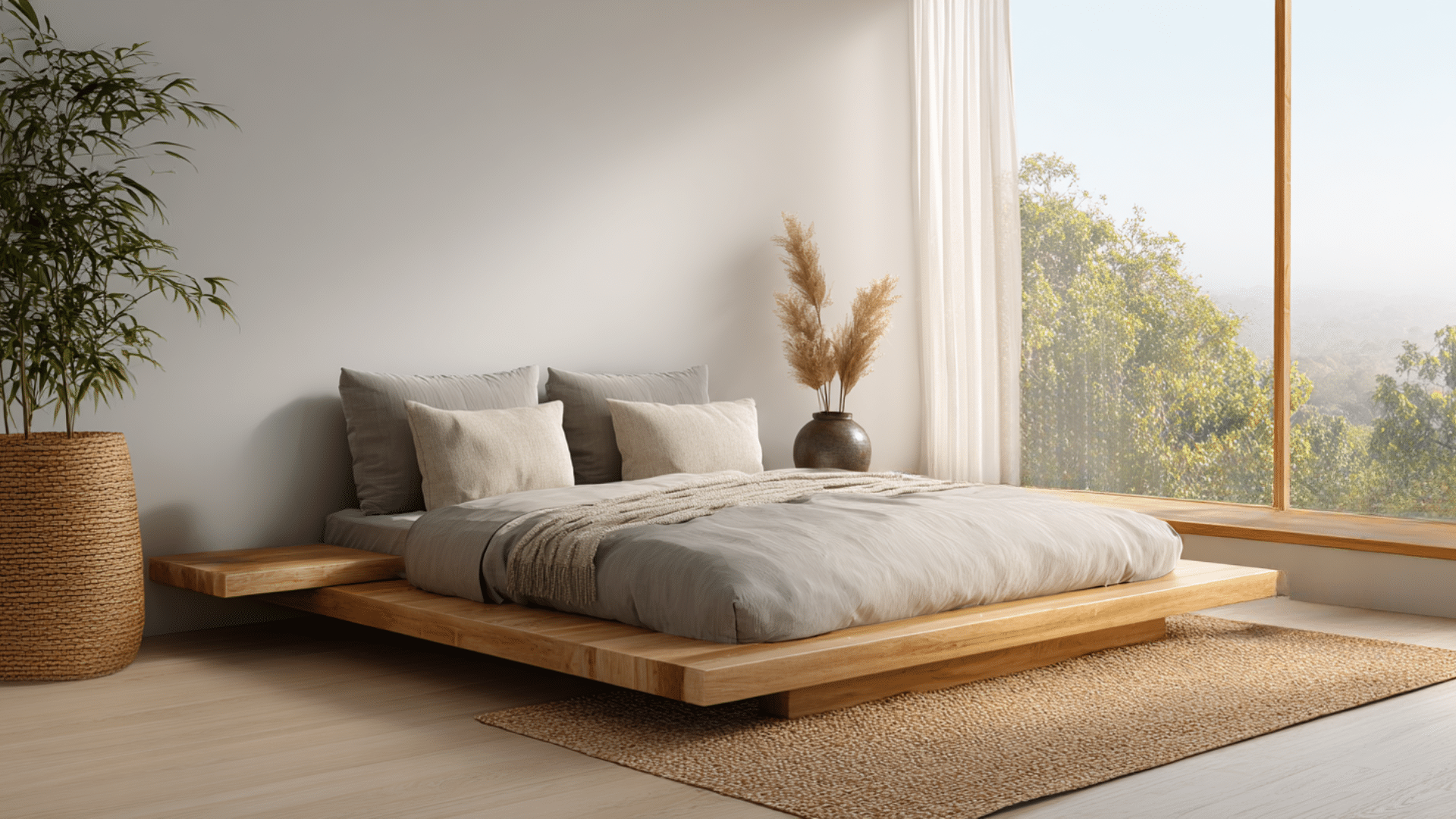
A bed that sits close to the ground creates the horizontal lines characteristic of this style. Platform designs eliminate the need for box springs, providing a clean and uncluttered bedroom.
Choose wood or upholstered versions.
Tip: Built-in storage drawers maximize the functionality of small bedrooms.
3. Hairpin Leg Furniture
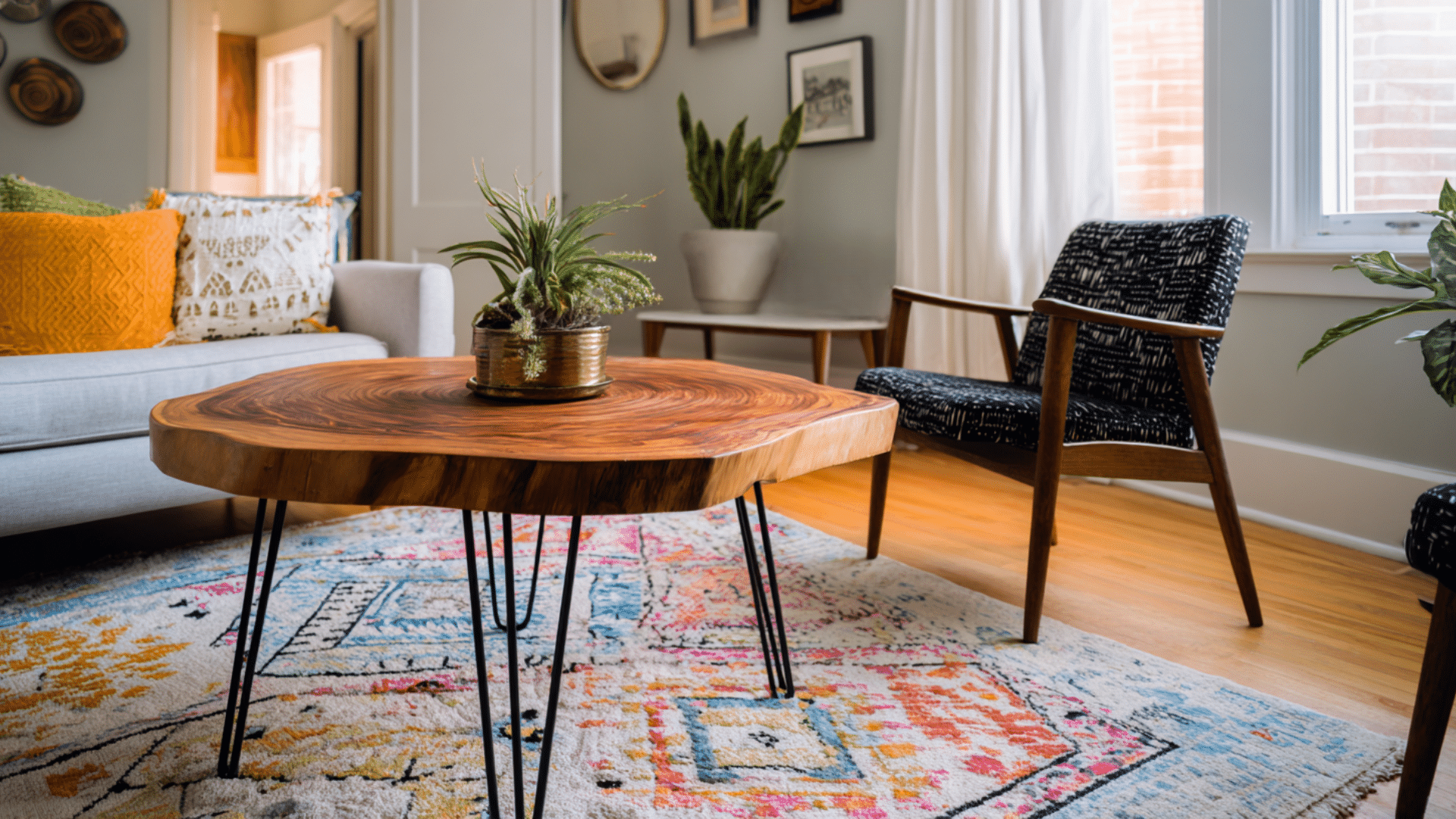
Tables, desks, and benches with thin metal hairpin legs offer industrial charm.
These three-pronged supports create visual lightness while providing sturdy function. Mix different heights and finishes throughout your rooms.
Tip: Add hairpin legs to existing wooden tabletops.
4. Geometric Pattern Rugs
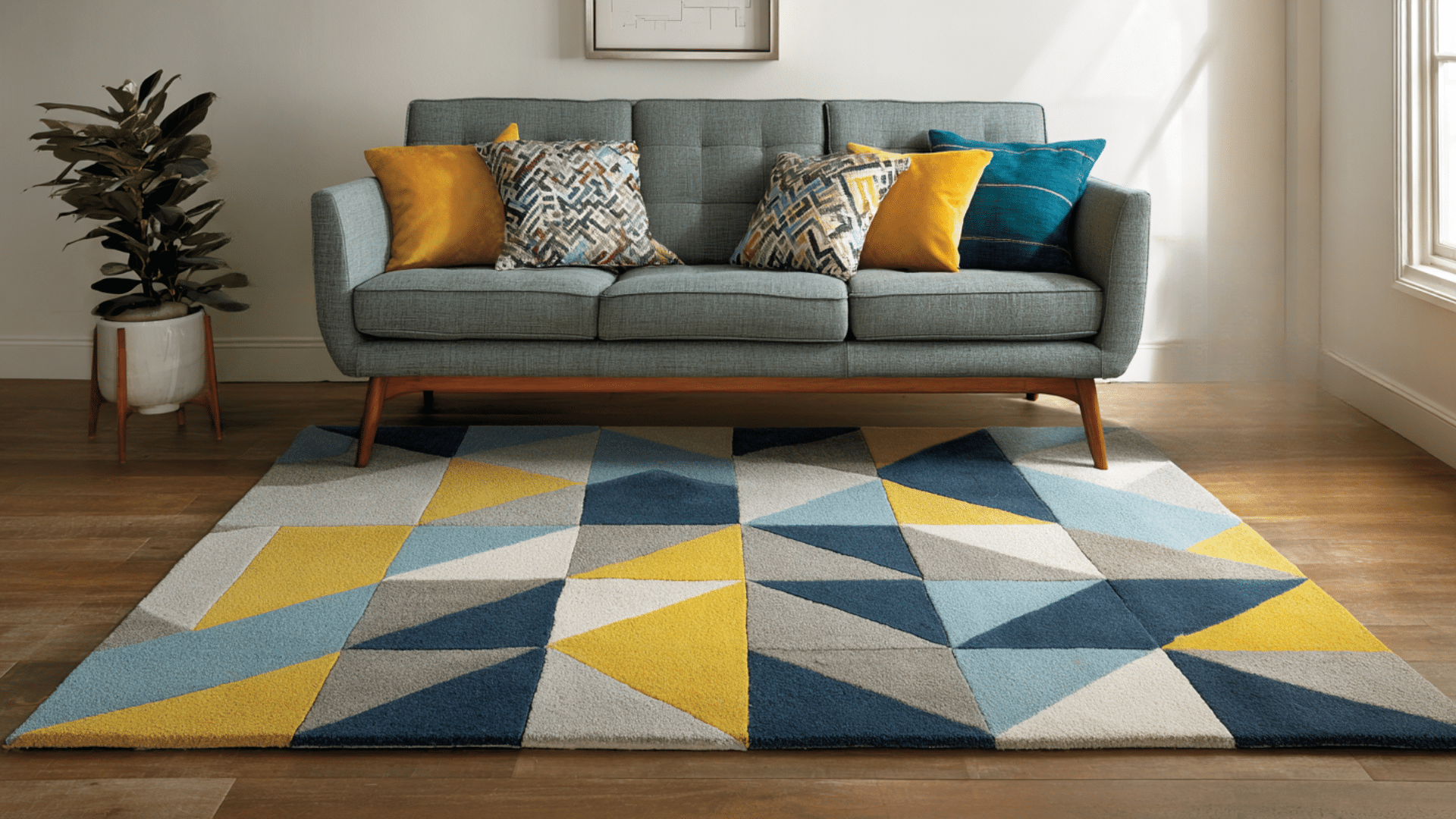
Bold patterns in circles, triangles, or abstract shapes ground seating areas, creating a visually striking effect.
Choose colors that complement your neutral base while adding visual interest. These rugs effectively define spaces in open floor plans.
Tip: Large rugs make small rooms appear bigger.
5. Built-in Shelving Units
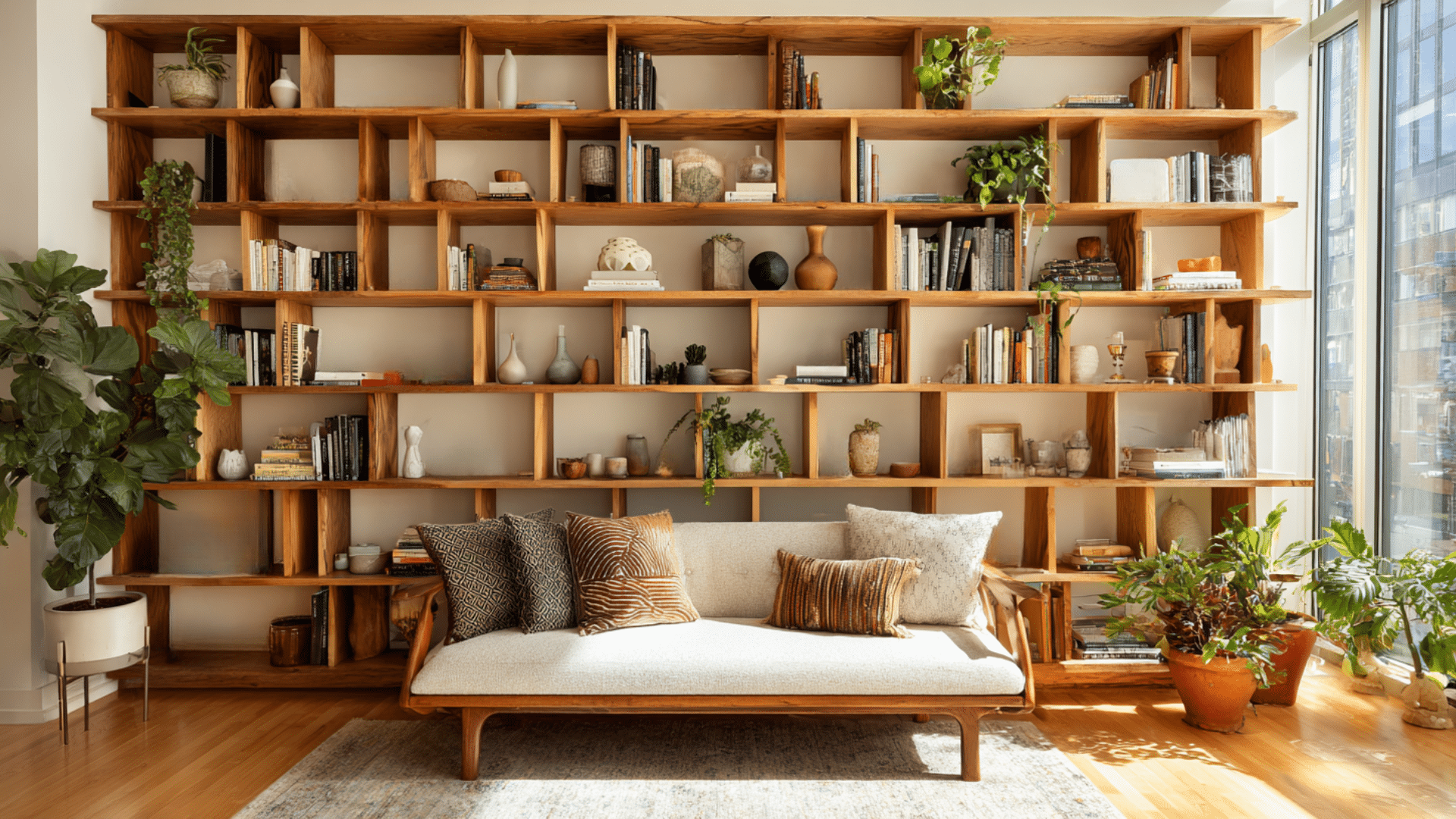
Floor-to-ceiling shelves provide storage while maintaining clean lines. Display books, plants, and decorative objects in organized arrangements.
Select wood tones that complement your existing furniture finishes for a cohesive look.
Tip: Use modular cube systems for affordable built-ins.
6. Tulip Dining Tables
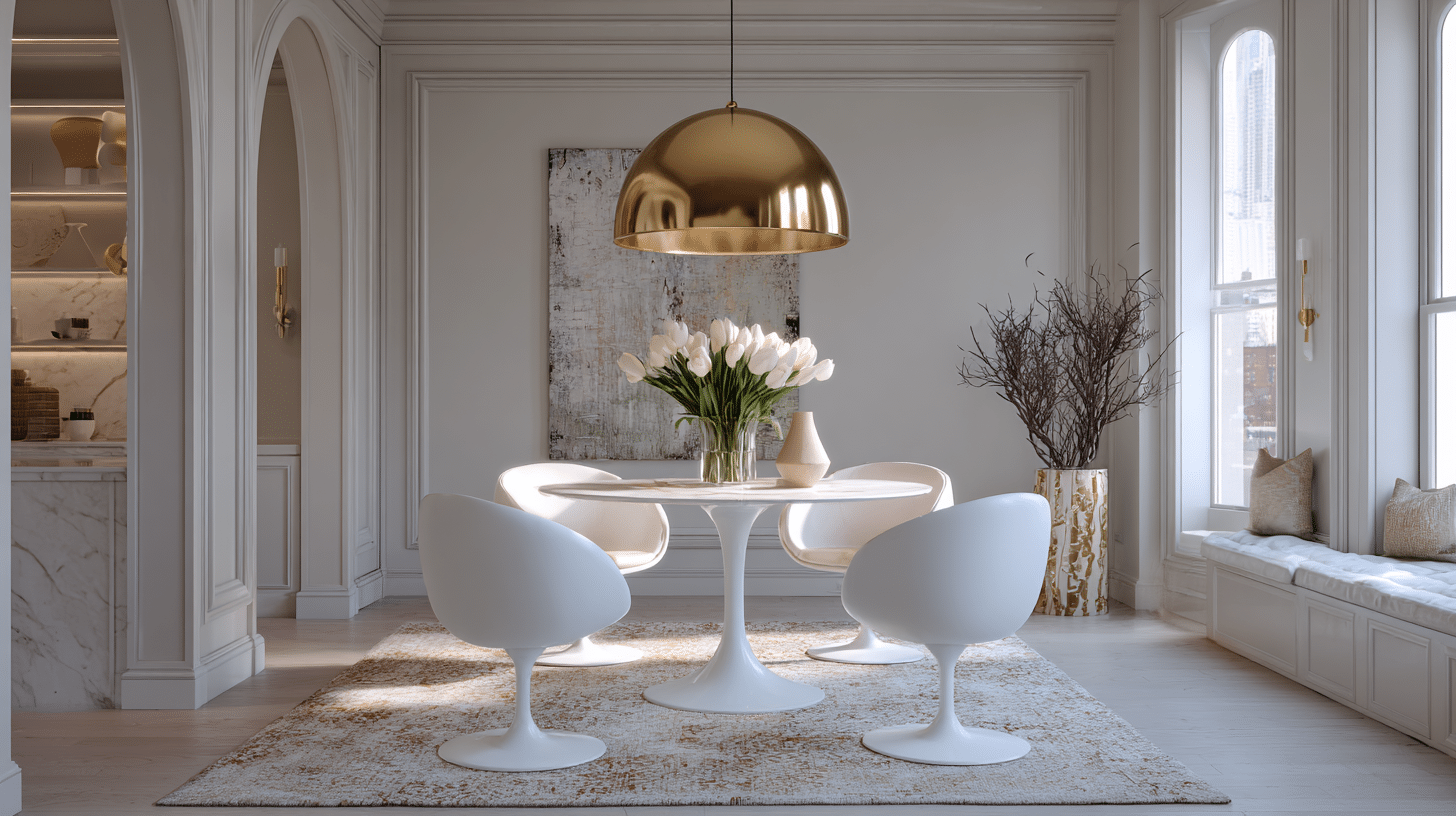
Round tables with single pedestal bases create flowing dining spaces.
The curved edges soften angular room elements while encouraging conversation. White or wood tops work with various chair styles and room colors.
Tip: Round tables fit better in tight spaces.
7. Boomerang Coffee Tables
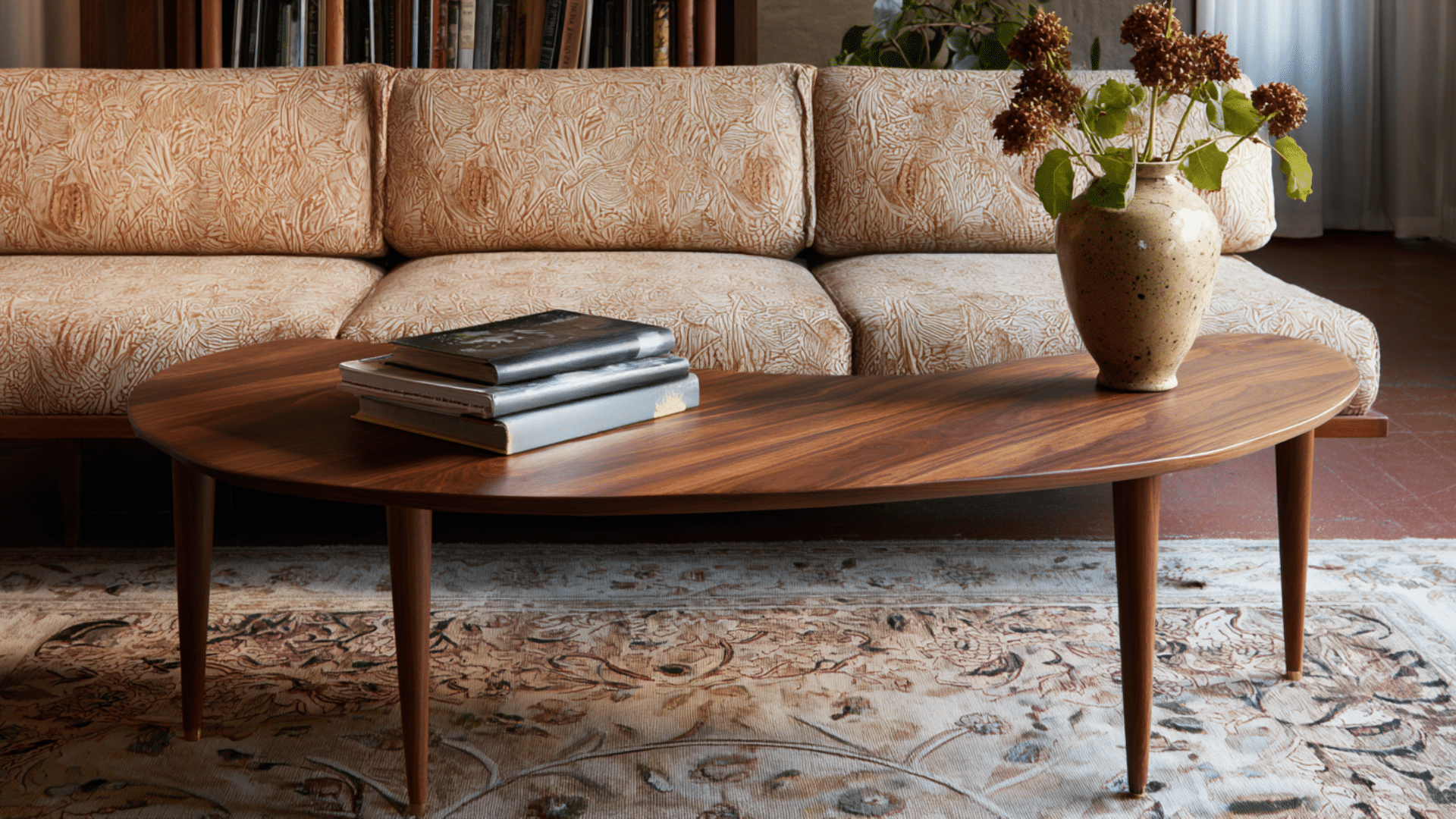
Kidney-shaped tables with tapered legs add a touch of natural grace to living rooms.
These sculptural pieces serve as functional art, providing a surface space for drinks and books. Choose wood or glass tops.
Tip: Refinish thrift store boomerang tables with sanding.
8. Sunken Living Rooms
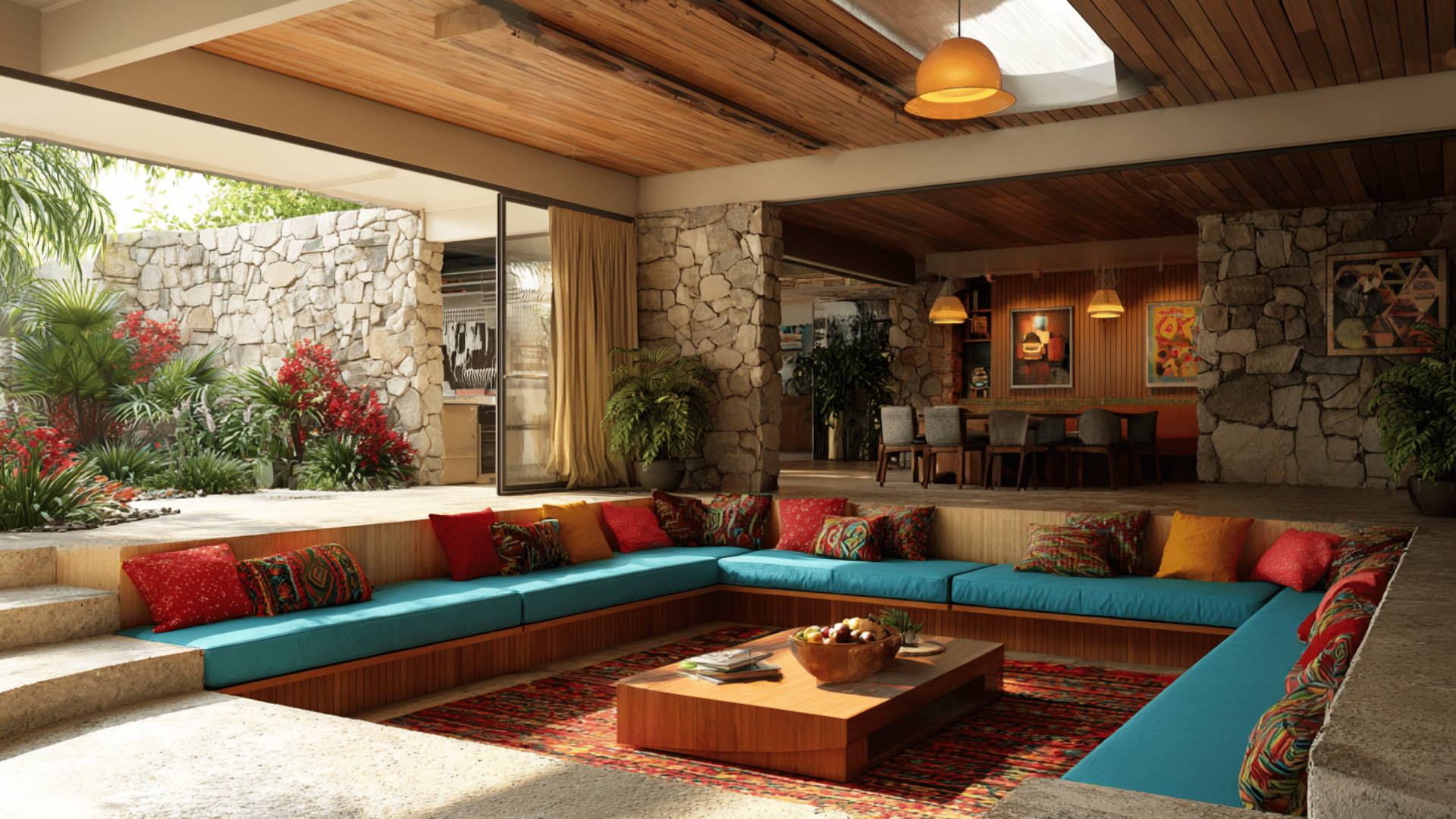
Conversation pits create intimate gathering spaces within larger rooms. Even a single step down defines the seating area while maintaining the open floor plan concept. Add built-in seating for maximum impact.
Tip: Use area rugs to fake a sunken room effect.
9. Accordion Room Dividers
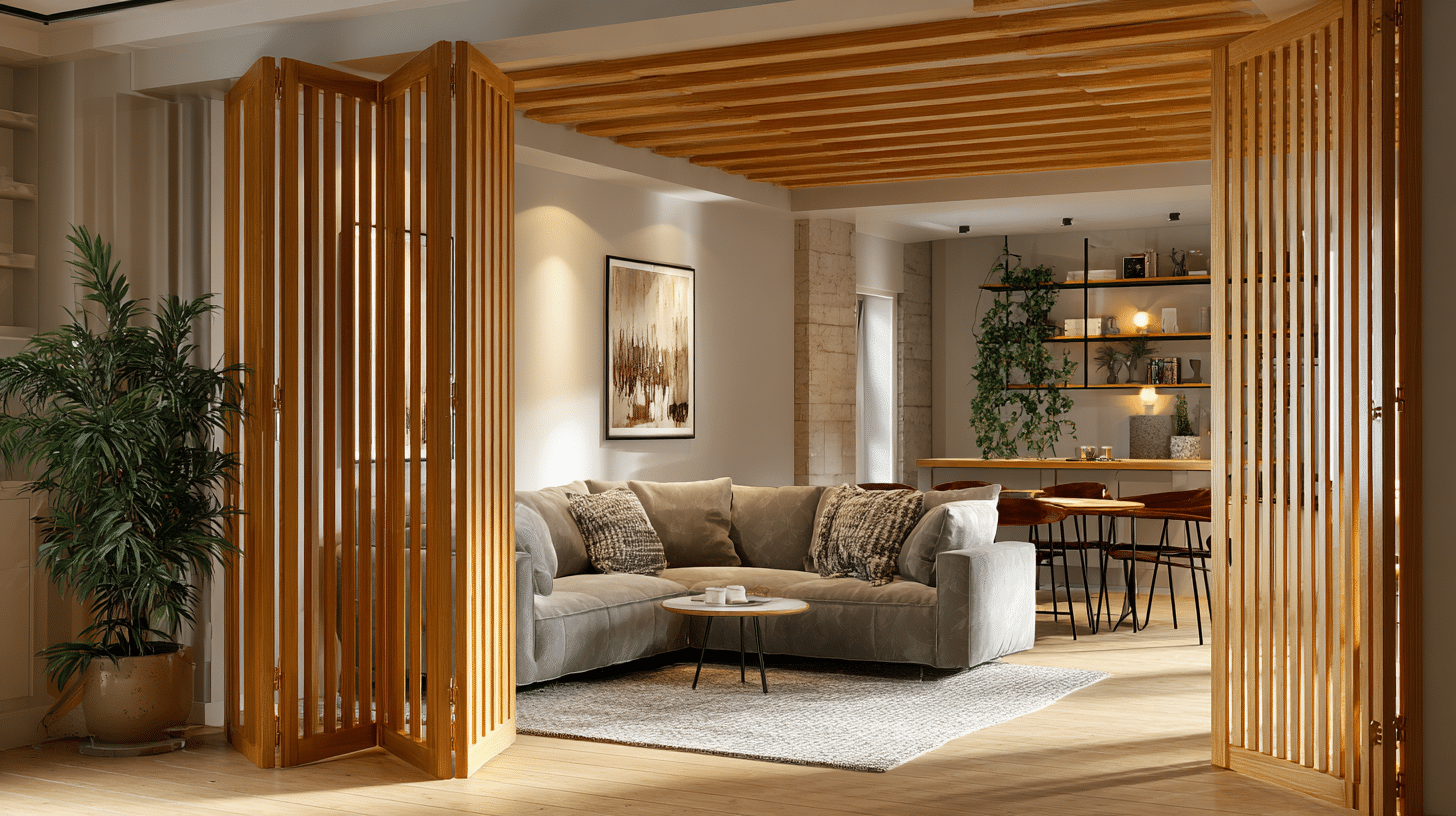
Folding screens separate spaces without the need for permanent walls.
Select wood slats, fabric panels, or geometric cutouts to maintain a cohesive visual flow throughout the space. These movable partitions adapt to changing needs and entertaining requirements.
Tip: Make DIY versions using wooden frames and fabric.
10. Pendant Light Clusters
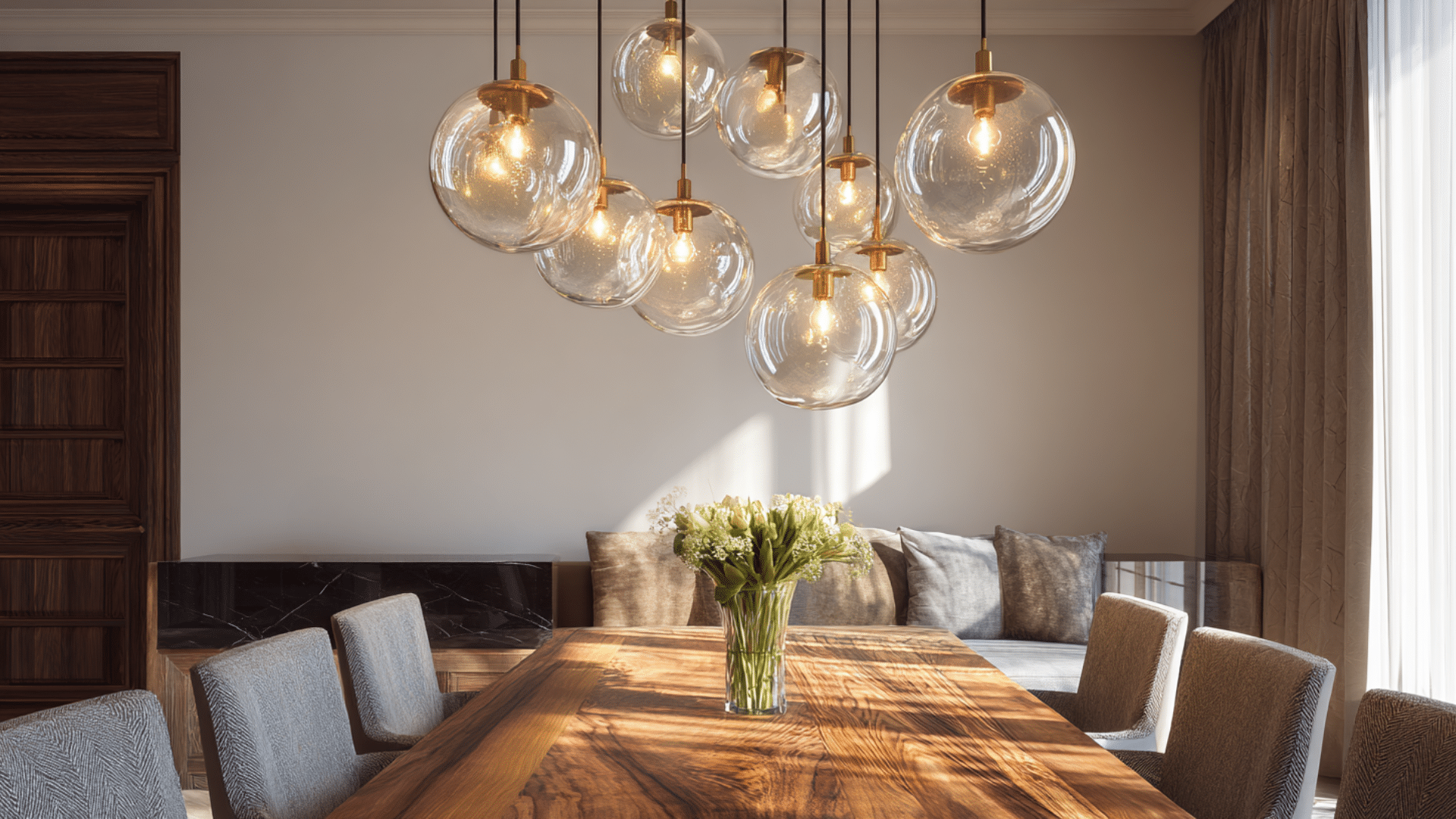
Groups of hanging lights at varying heights create dramatic focus points. Choose globe, cone, or cylinder shapes in brass, copper, or colorful finishes. Cluster them over dining tables or kitchen islands.
Tip: Single large pendants work better than clusters.
11. Teak Wood Credenzas
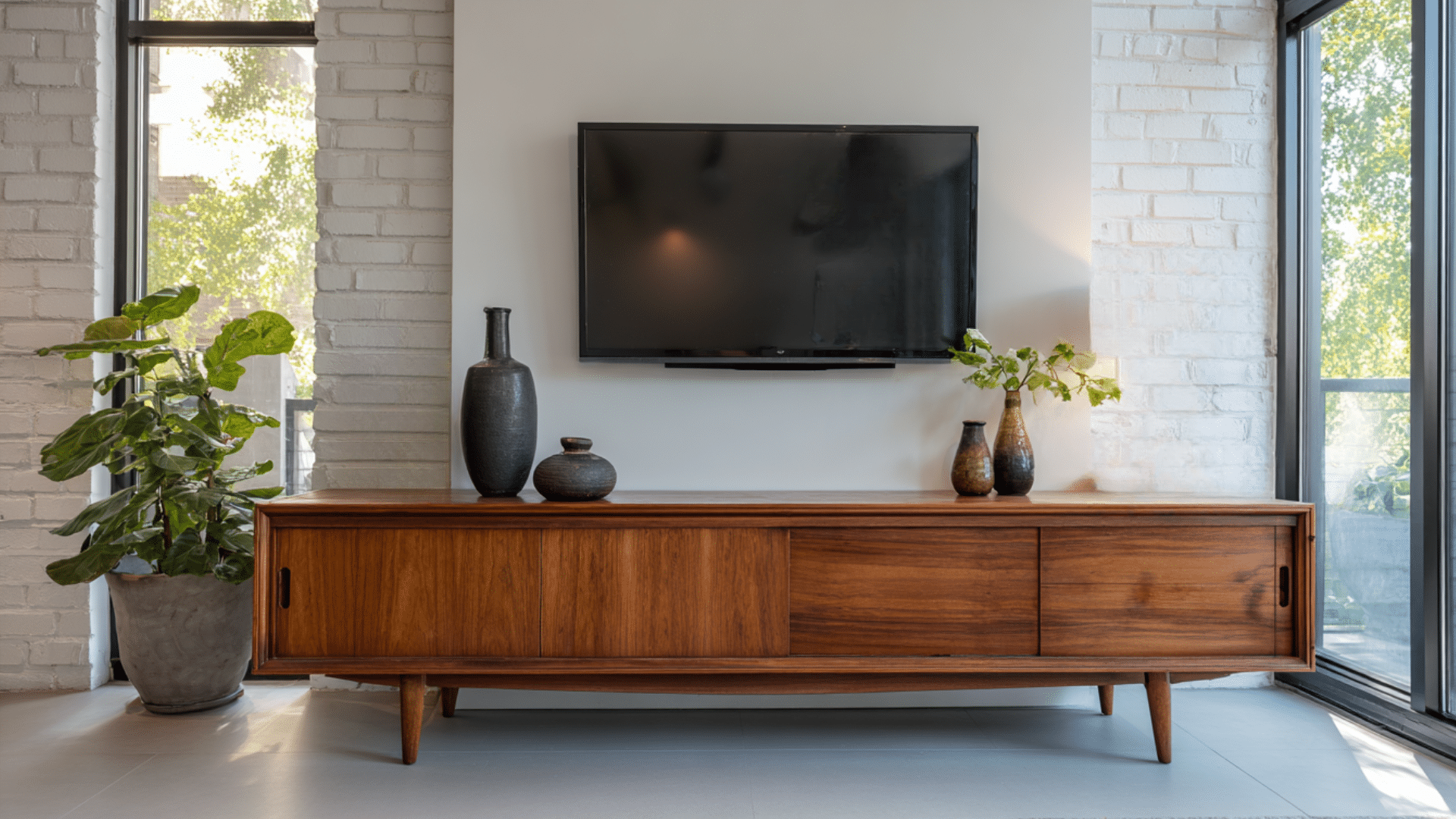
Long, low storage pieces with sliding doors hide clutter beautifully. Use them as TV stands, bar units, or general storage in living and dining areas. The horizontal force reinforces mid-century proportions.
Tip: Refinish damaged teak pieces for major savings.
12. Atomic Print Wallpaper
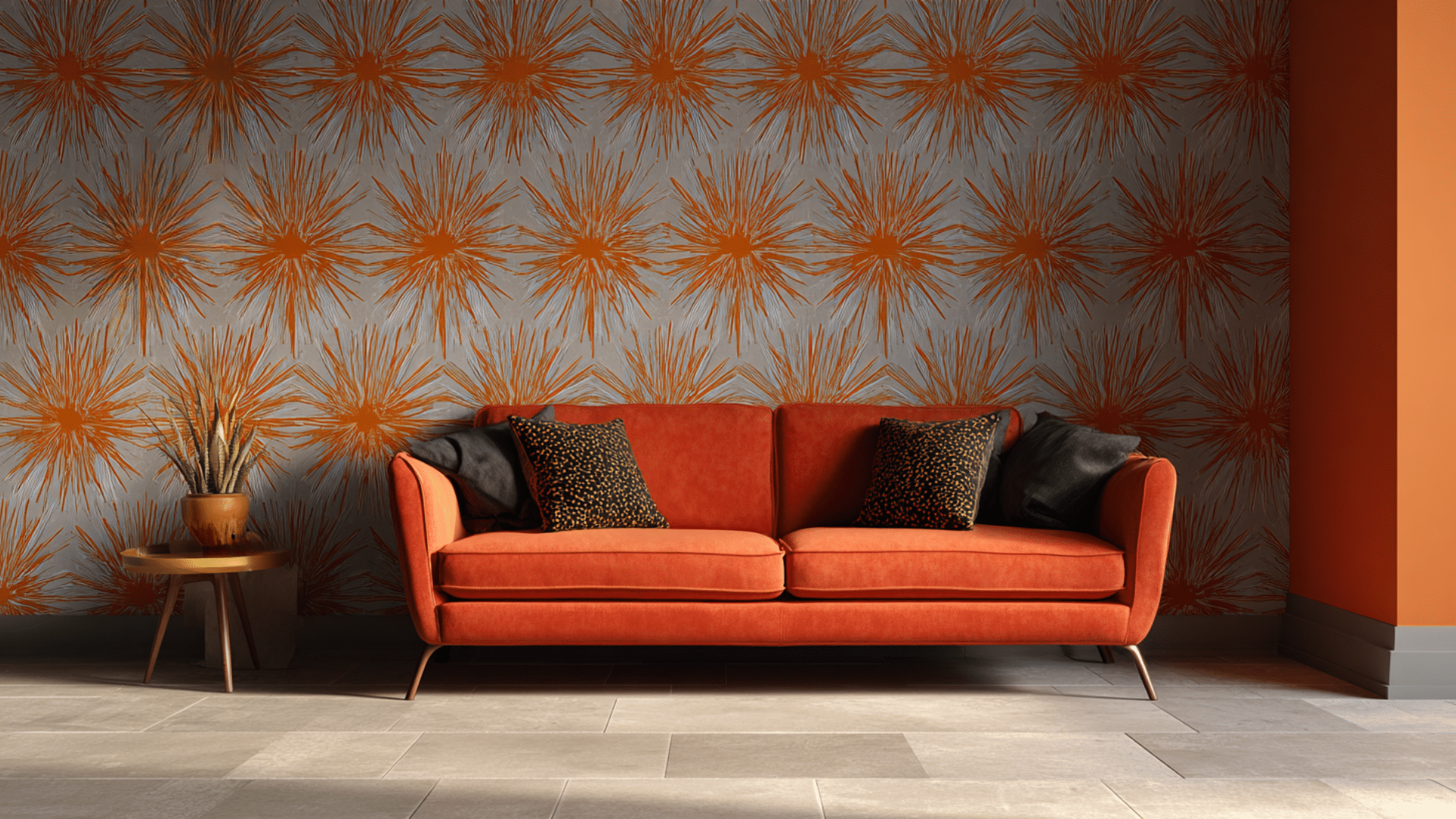
Bold patterns featuring boomerangs, starbursts, or molecular designs create accent walls. Use sparingly to avoid overwhelming smaller spaces.
Select colors that coordinate with your existing furniture and accessories to achieve a balanced look.
Tip: Use atomic prints on single accent walls only.
13. Butterfly Chairs
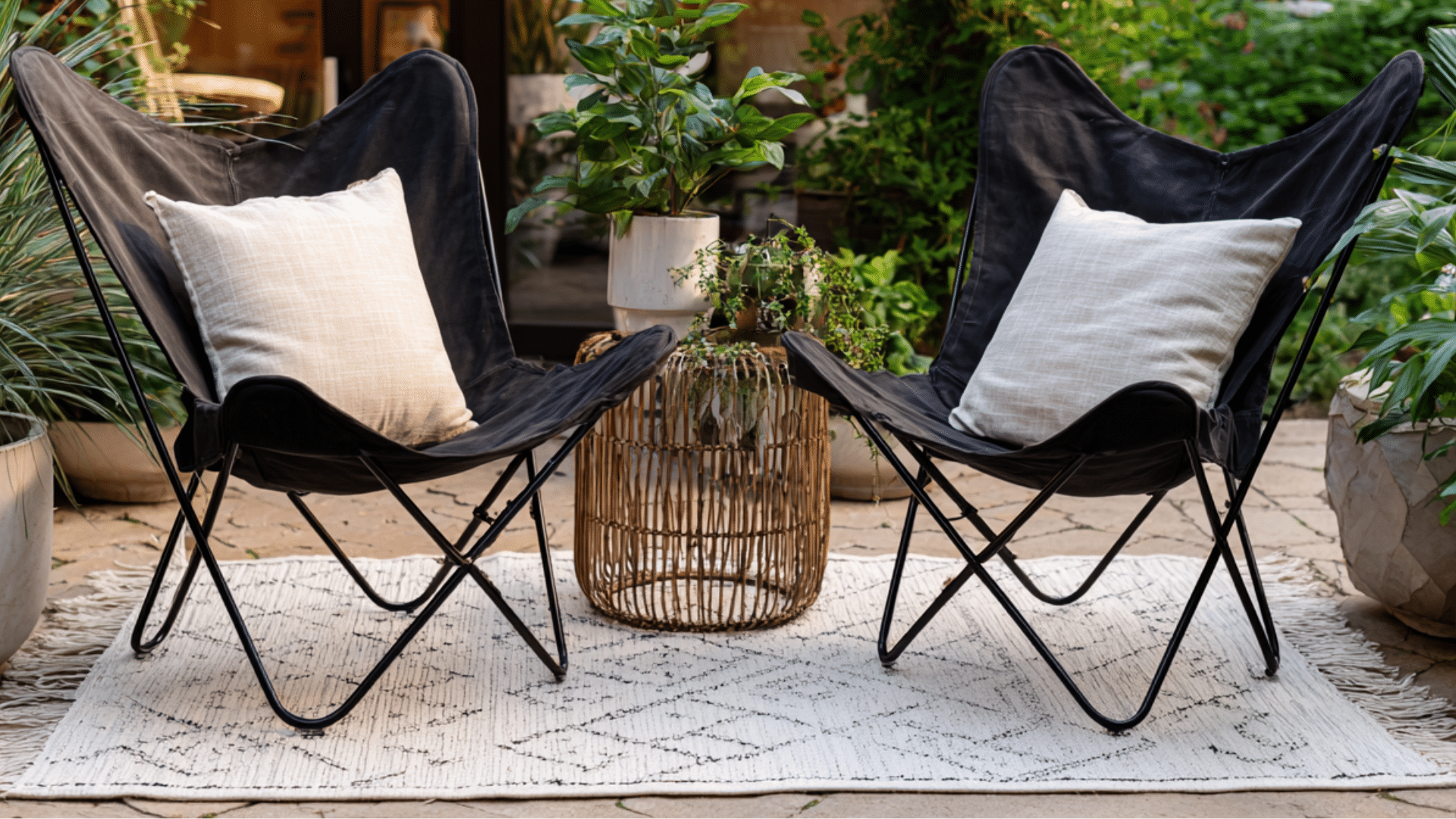
Canvas sling seats on metal frames provide comfortable seating with minimal visual weight.
These portable chairs are suitable for use indoors or outdoors. Choose neutral canvas or bold colors to match your design scheme.
Tip: Replace worn-out canvas seats instead of buying new ones.
14. Floor-to-Ceiling Curtains
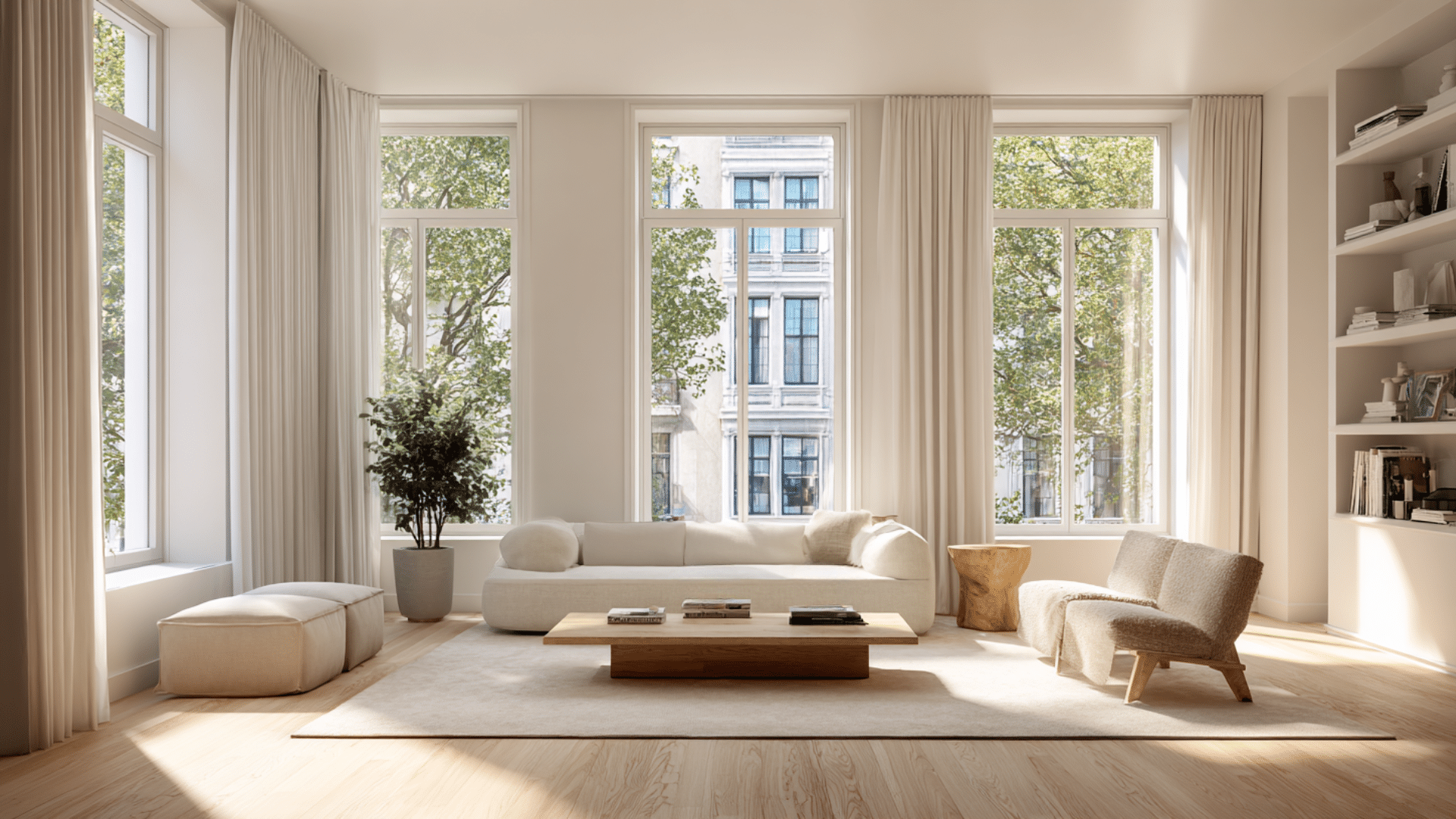
Long panels hung high make windows appear larger and rooms feel taller.
Choose solid colors or subtle patterns in natural fabrics. Avoid heavy treatments that block the vital connection to nature.
Tip: Mount curtain rods near the ceiling to create the illusion of height.
15. Terrazzo Flooring Accents
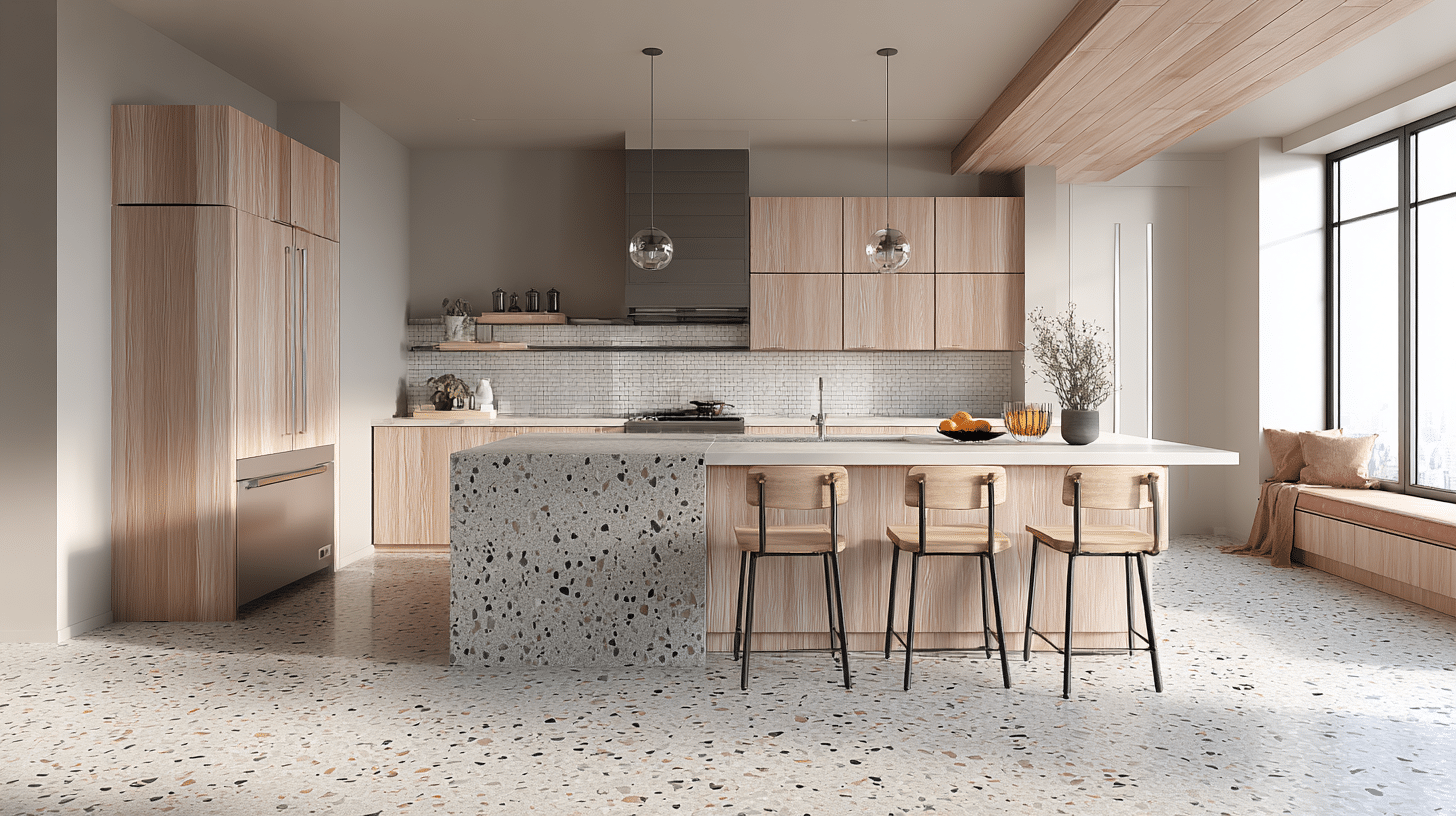
Speckled composite materials add texture and pattern to floors.
Use in bathrooms, kitchens, or as accent borders in larger rooms. Modern versions are available in various color combinations and offer different installation methods.
Tip: Use terrazzo-look vinyl tiles for similar effects.
16. Exposed Beam Ceilings
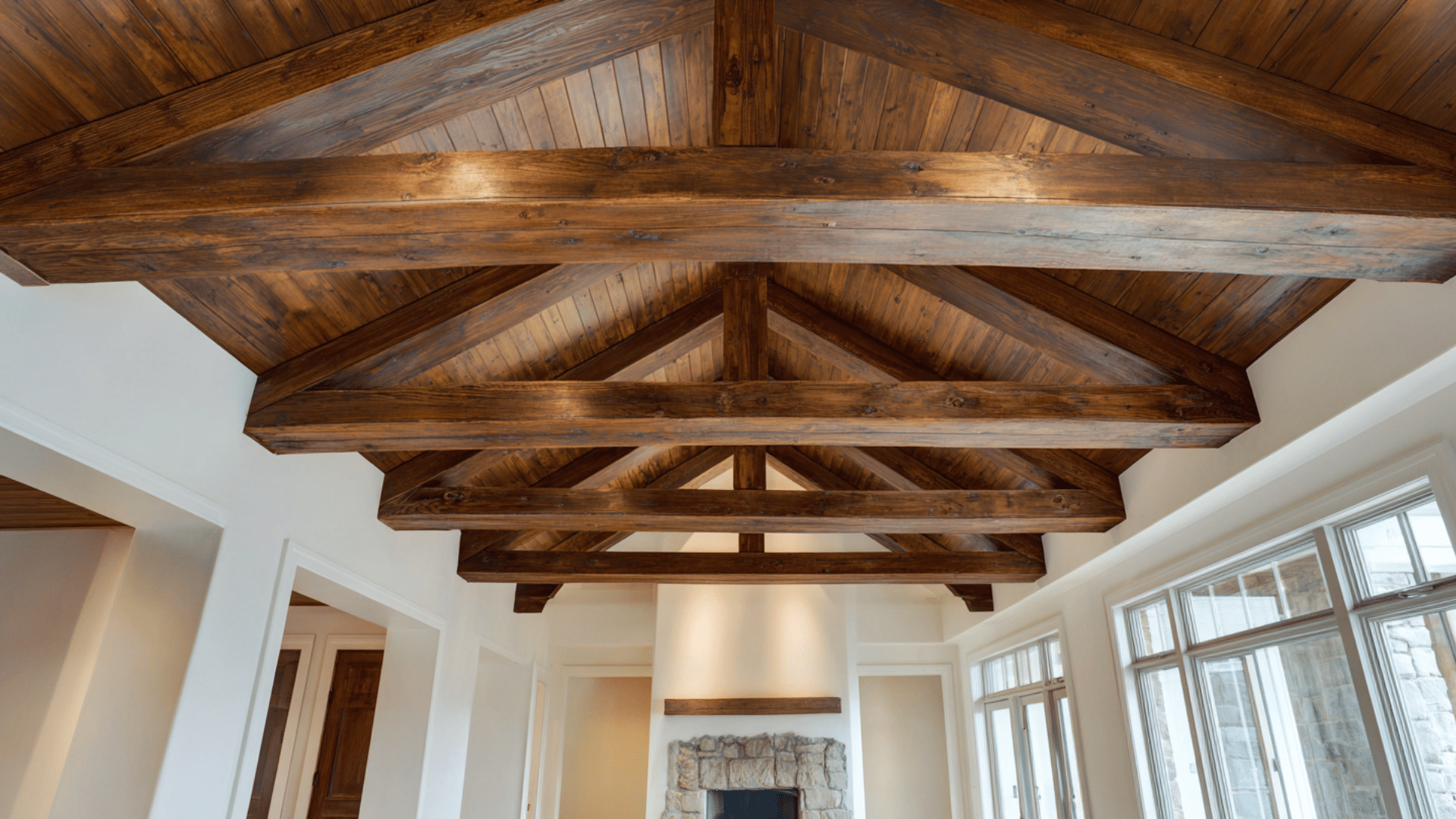
Structural elements become decorative features when left visible.
Paint the beams in contrasting colors or leave them in their natural wood tones. This architectural detail adds visual interest while emphasizing the home’s honest construction.
Tip: Faux beams can be used in homes that lack a traditional structural framework.
17. Modular Seating Systems
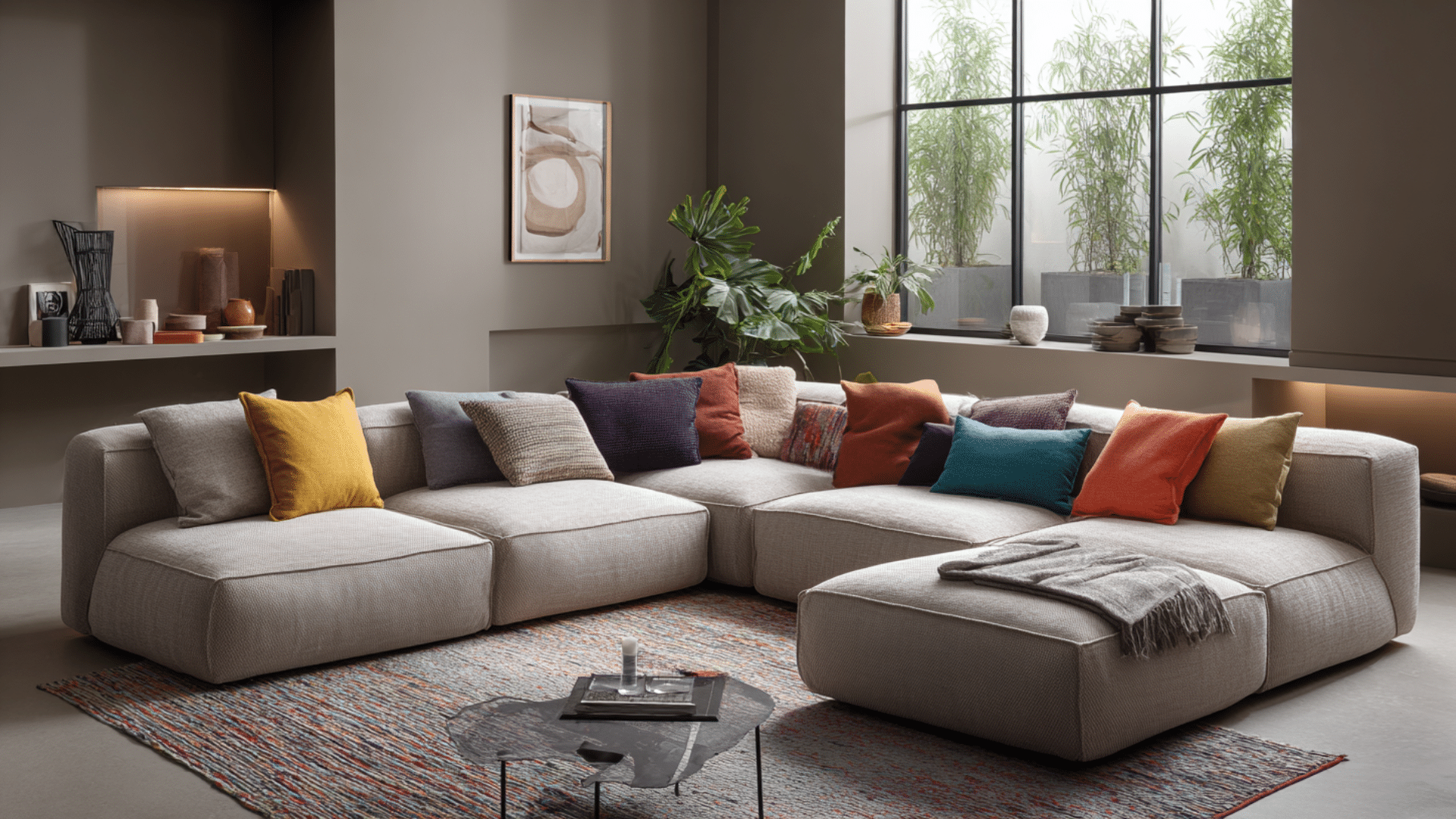
Individual pieces that connect create flexible living room arrangements.
Mix ottomans, corner pieces, and straight sections as needed. Choose low-profile furniture and simple upholstery in neutral or bold, solid colors.
Tip: Start with basic pieces and add modules gradually.
18. Glass Block Windows
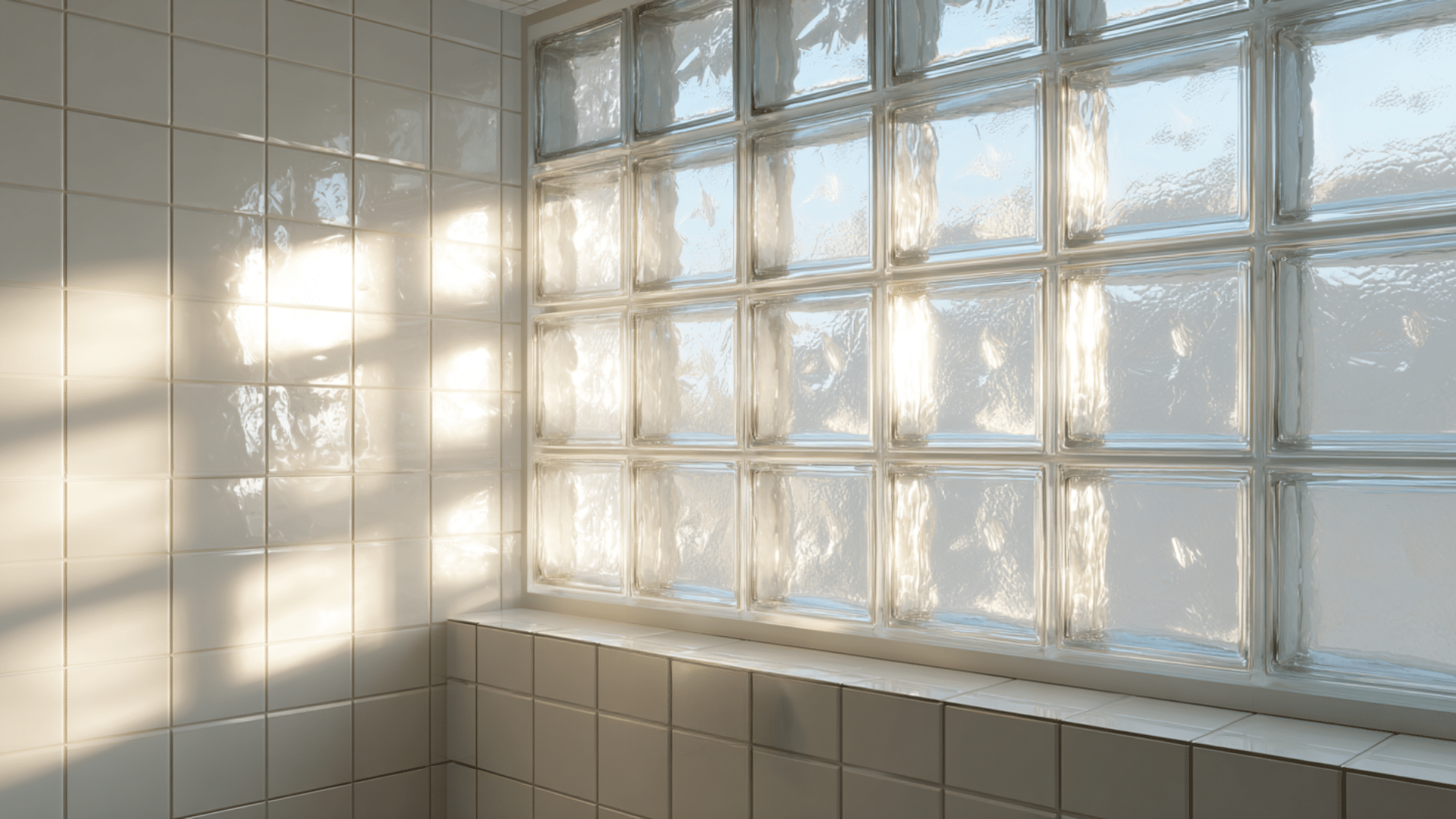
Translucent blocks provide privacy while allowing natural light to filter through.
These architectural elements work exceptionally well in bathrooms and room divisions. They add textural interest without sacrificing the clean look.
Tip: Use glass blocks as partial walls only.
19. Floating Staircases
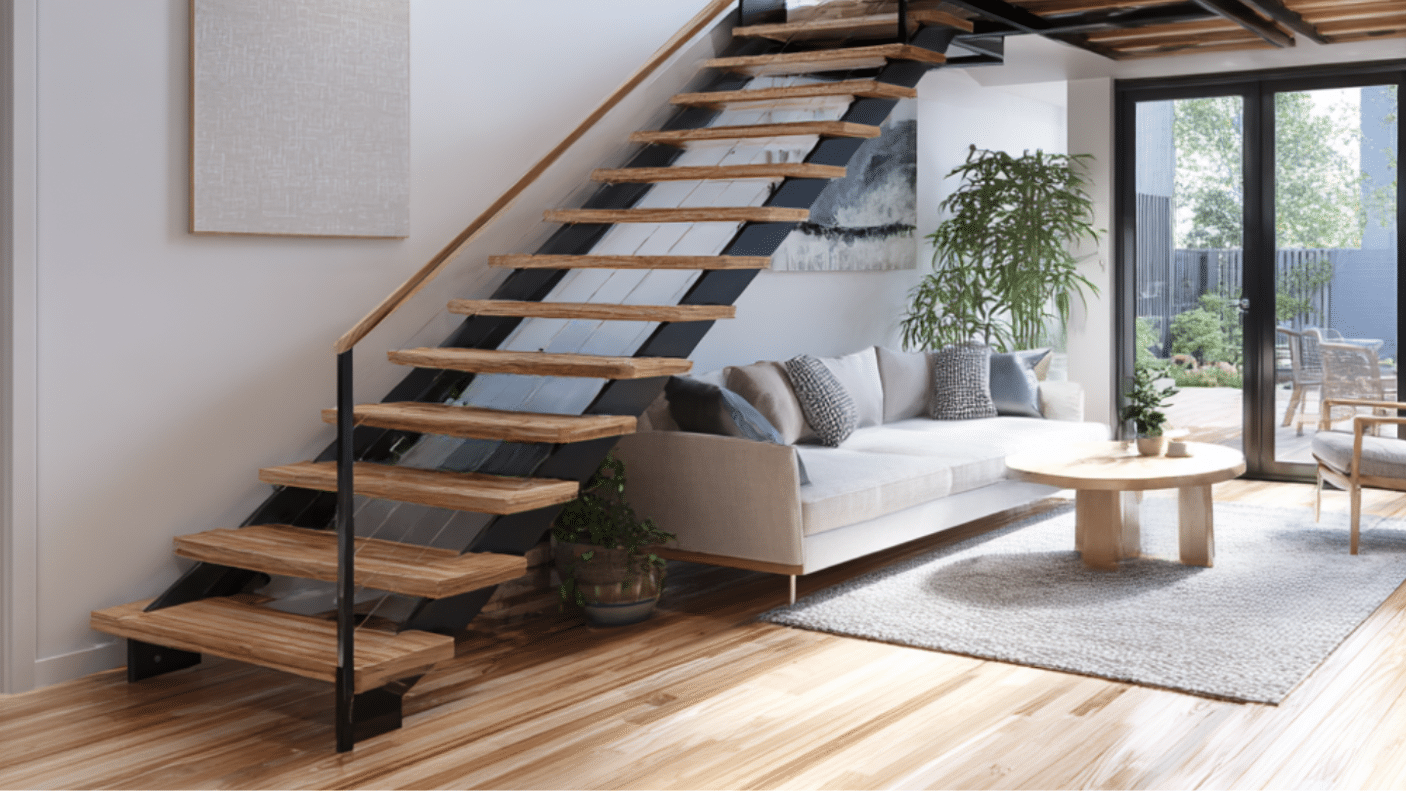
Open treads without risers create sculptural focus points in multi-level homes, adding a unique look.
Metal supports and wood treads maintain the honest materials approach. These designs make spaces feel larger and more connected.
Tip: Add floating shelves to mimic a floating stair look.
20. Stone Feature Walls
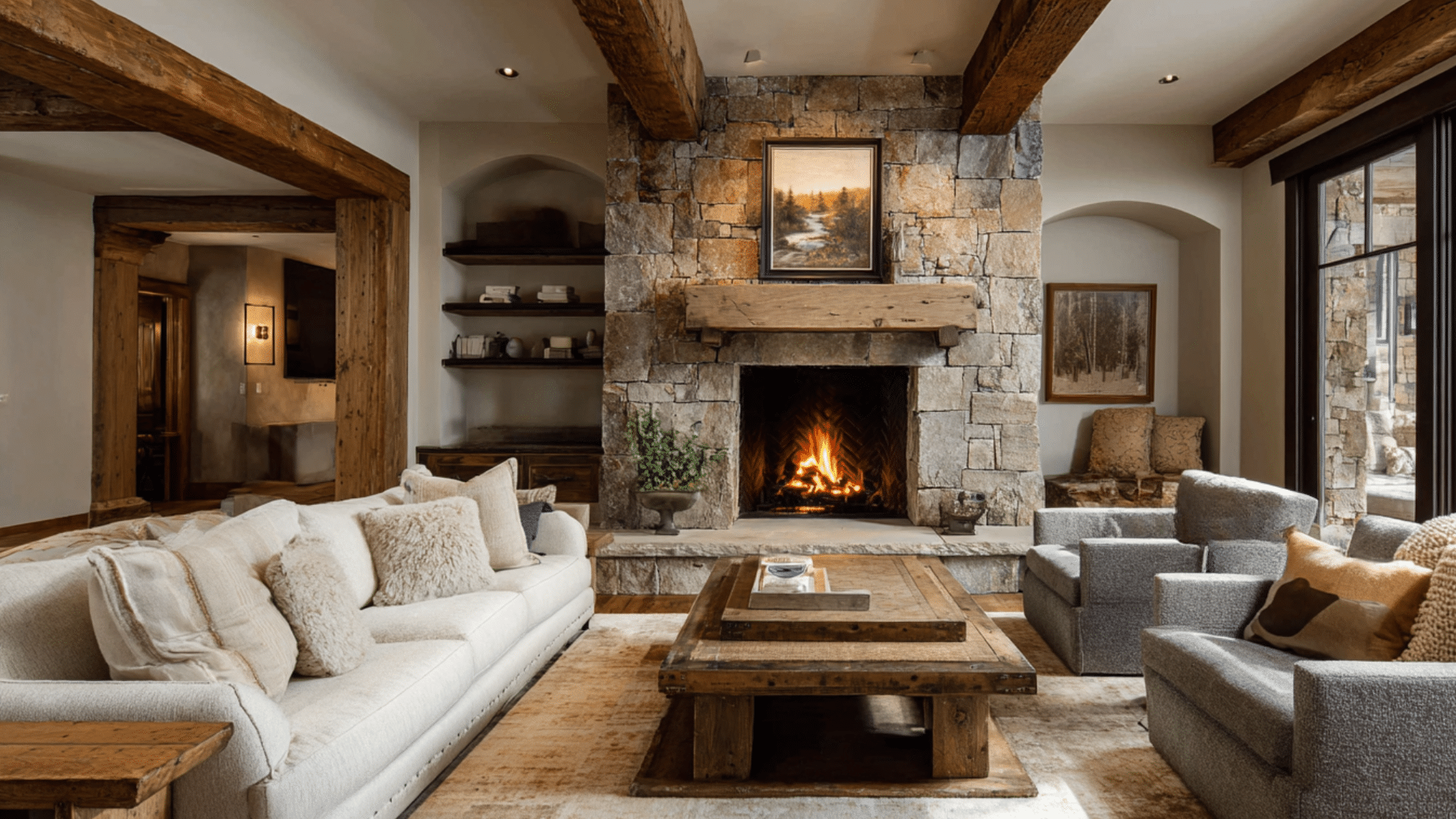
Natural rock or brick surfaces add texture to living spaces, improving their look.
Use behind fireplaces, as accent walls, or in entryways. Choose stones with interesting patterns and colors that complement wood elements.
Tip: Light colors make stone walls less overwhelming.
21. Retro Bar Carts
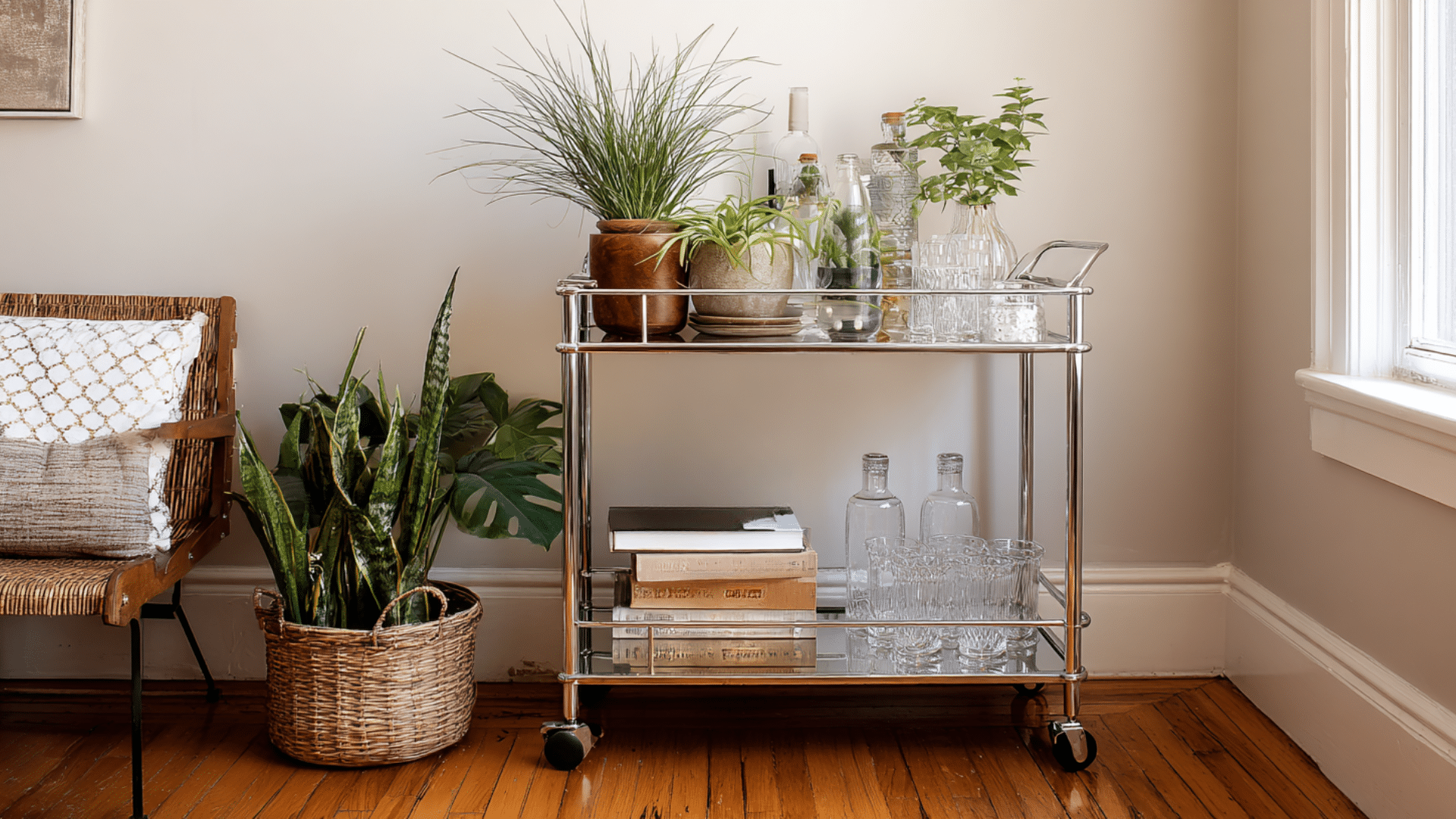
Mobile serving stations with multiple levels provide entertaining functionality. Choose brass, chrome, or wood finishes with glass shelves.
Stock with period-appropriate barware and use it for both storage and display.
Tip: Convert vintage TV carts into stylish bar carts.
Color Palette and Materials
Mid-century modern style relies on a distinct combination of colors and materials to achieve its signature look. These combinations bring cosyth while maintaining a clean and uncluttered overall feel.
| Colors | Materials |
|---|---|
| cosy white | Teak wood |
| Charcoal gray | Walnut wood |
| Burnt orange | Leather |
| Turquoise blue | Brass |
| Mustard yellow | Stone |
| Forest green | Glass |
| Rich brown | Steel |
Why Mid-Century Modern Still Works Today
Decades after its peak, mid-century modern design remains incredibly popular.
This lasting look isn’t just about nostalgia, but it’s about how well this style meets the current lifestyle needs and preferences.
- A sustainability focus aligns with today’s environmental consciousness and values.
- A modest approach reduces stress in our overstimulated digital world
- Quality craftsmanship offers durability against disposable culture trends
- Flexible spaces adapt to remote work and changing lifestyles
- Effortless design transcends fleeting trends and fashion cycles
Final Thoughts
From clean lines combined with natural materials, each element serves a purpose, creating beautiful spaces you’ll enjoy living in.
Remember, original mid-century modern isn’t about perfection, but it’s about creating functional spaces that feel calm and inviting.
Your home should work for your life, not against it.
Mid-century modern design does precisely that, proving why this sixty-year-old style still feels fresh and relevant today.

